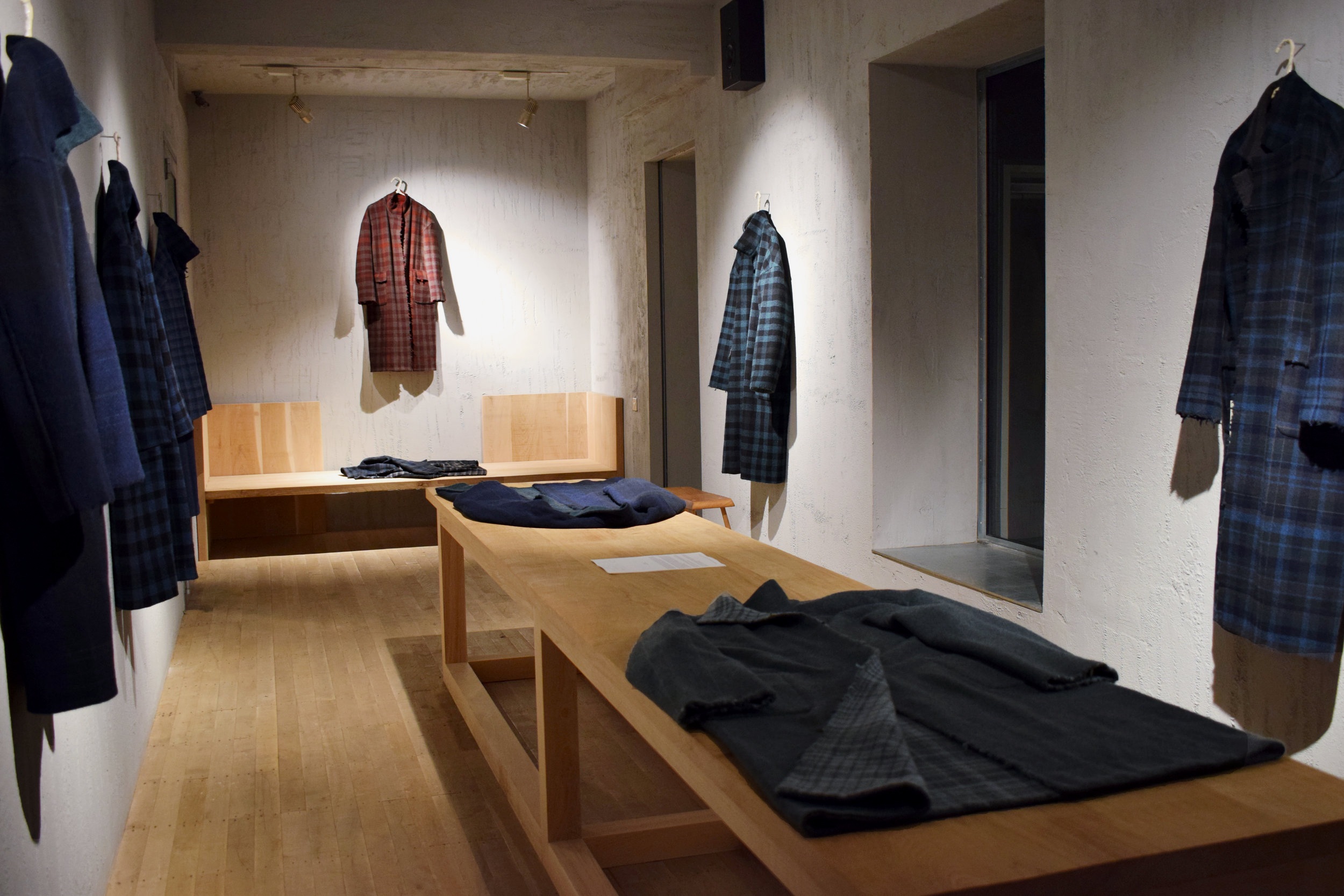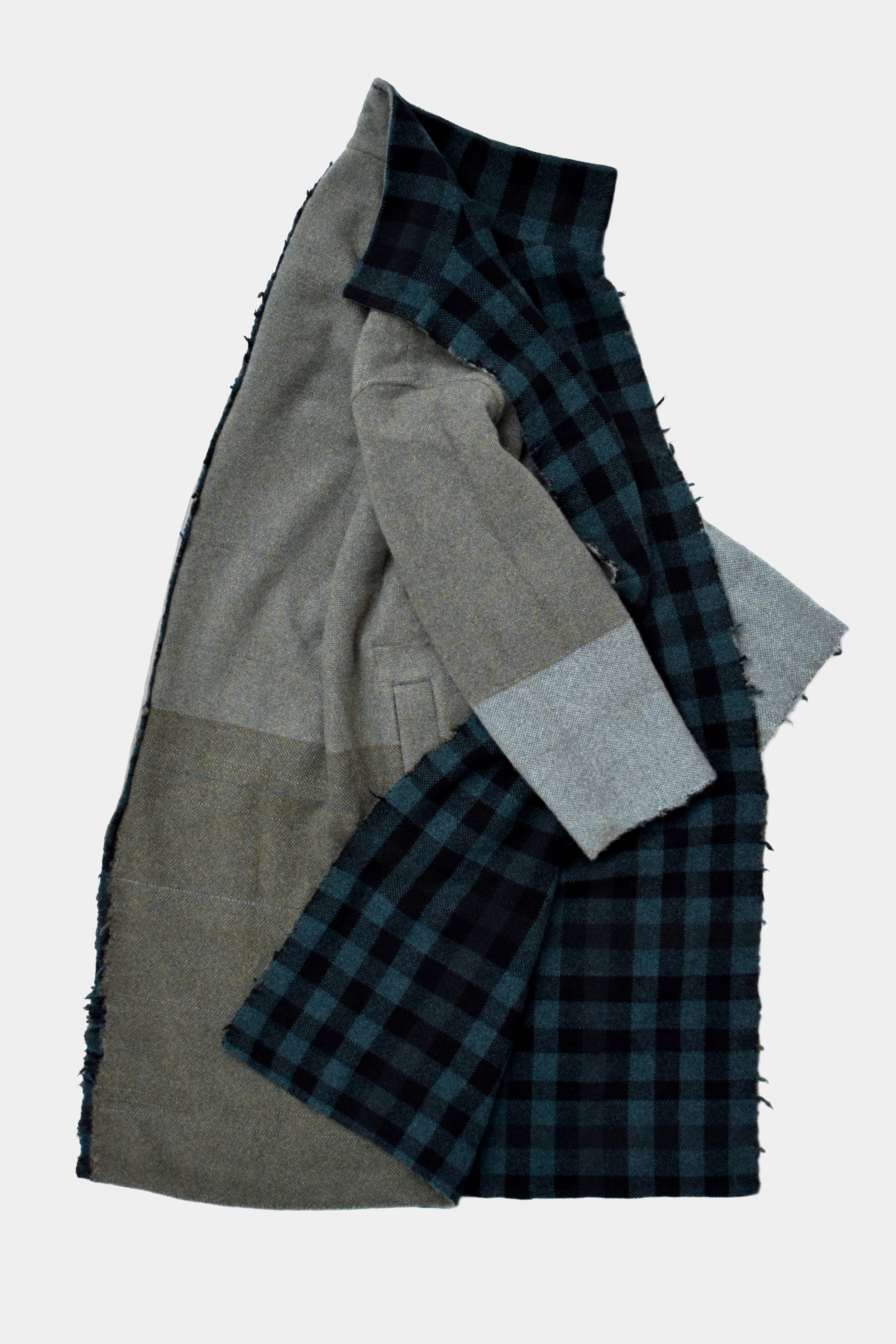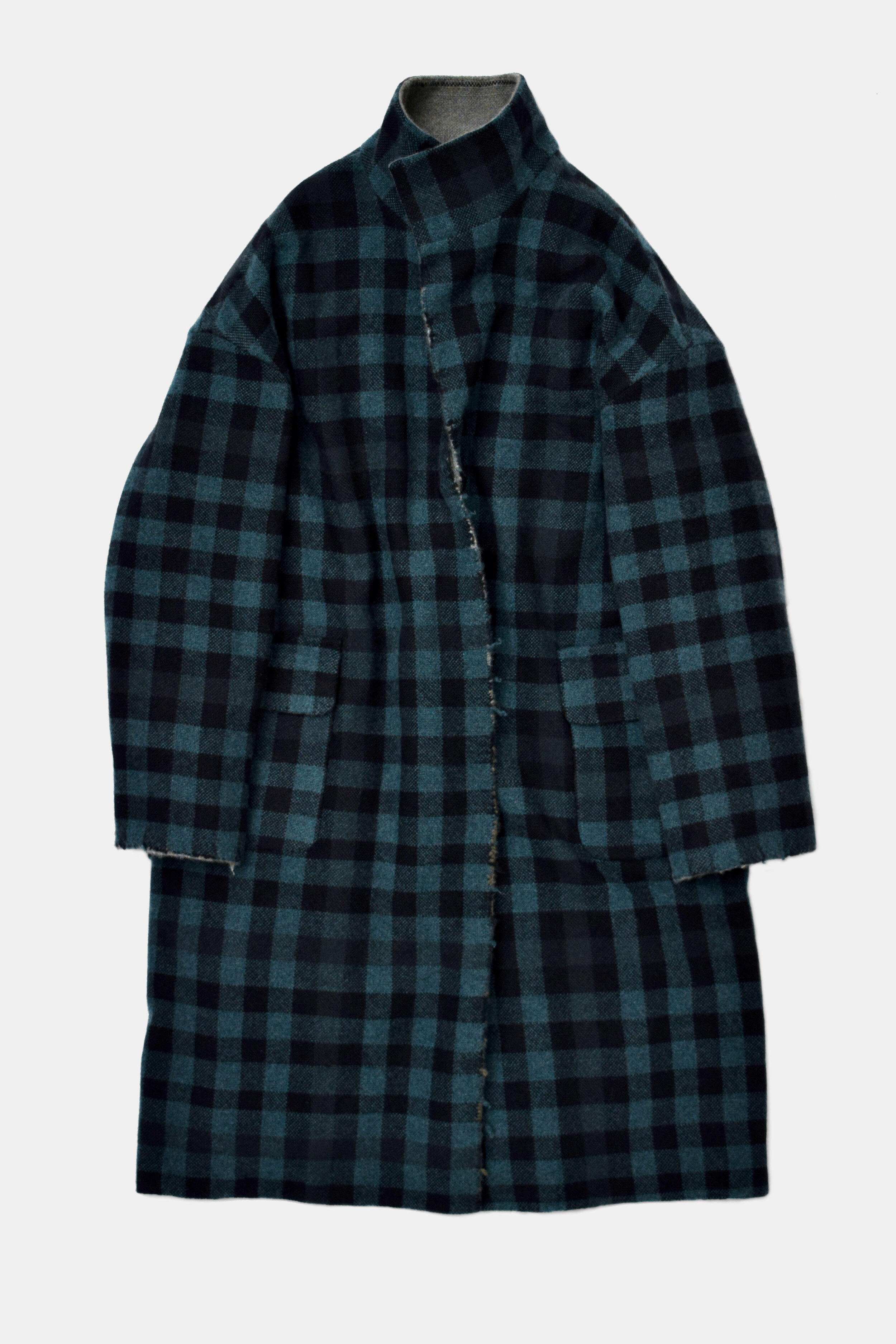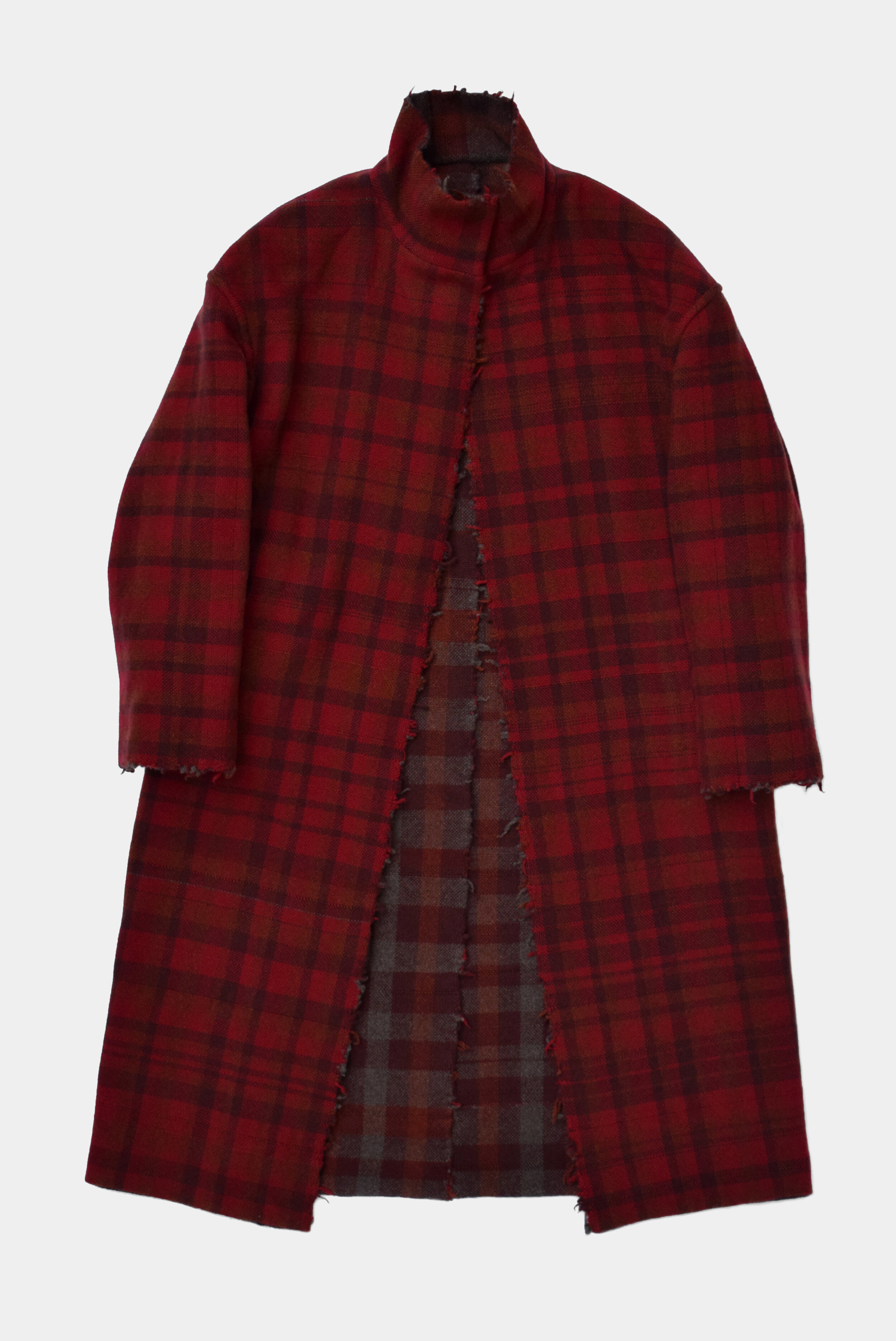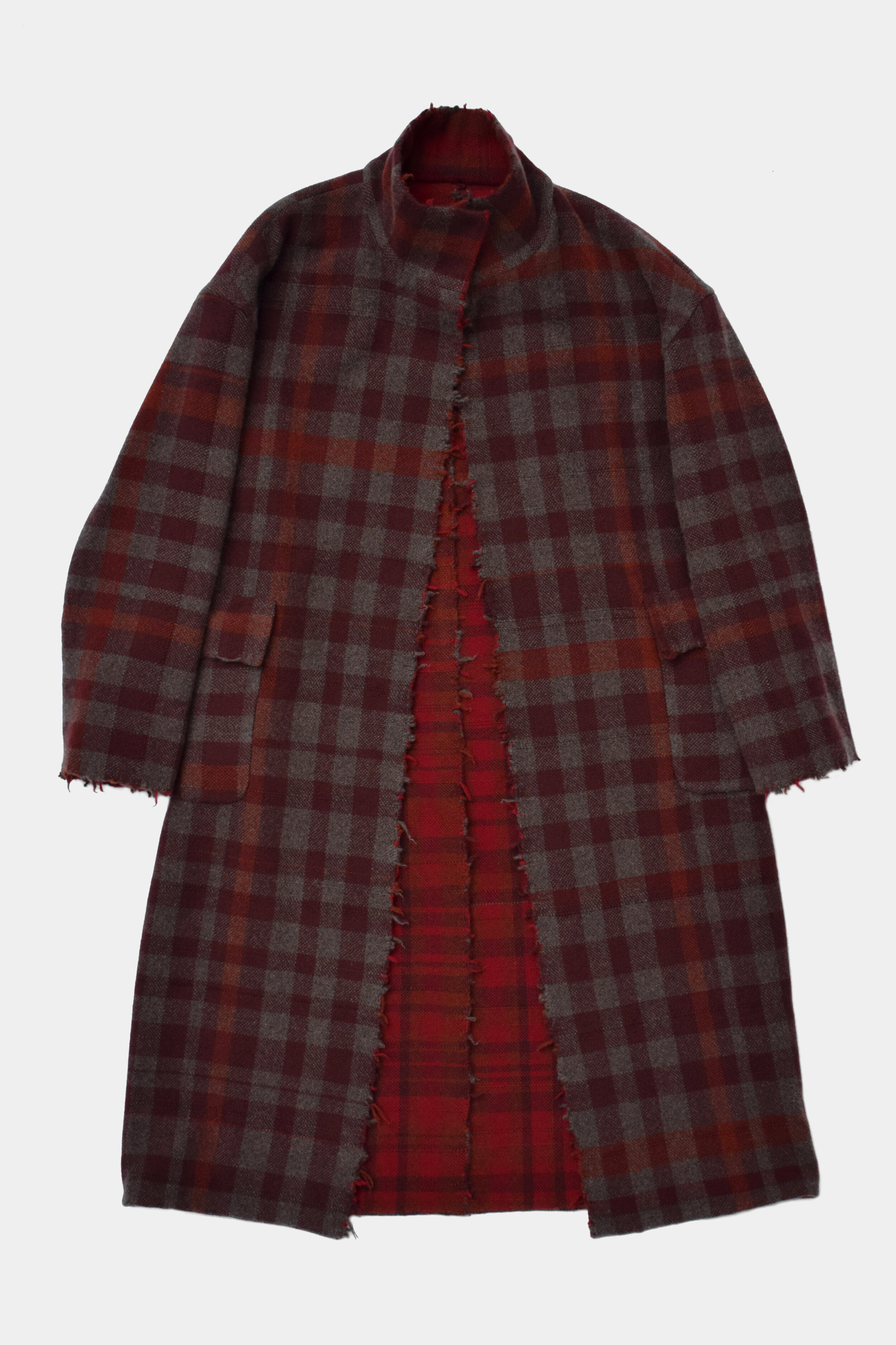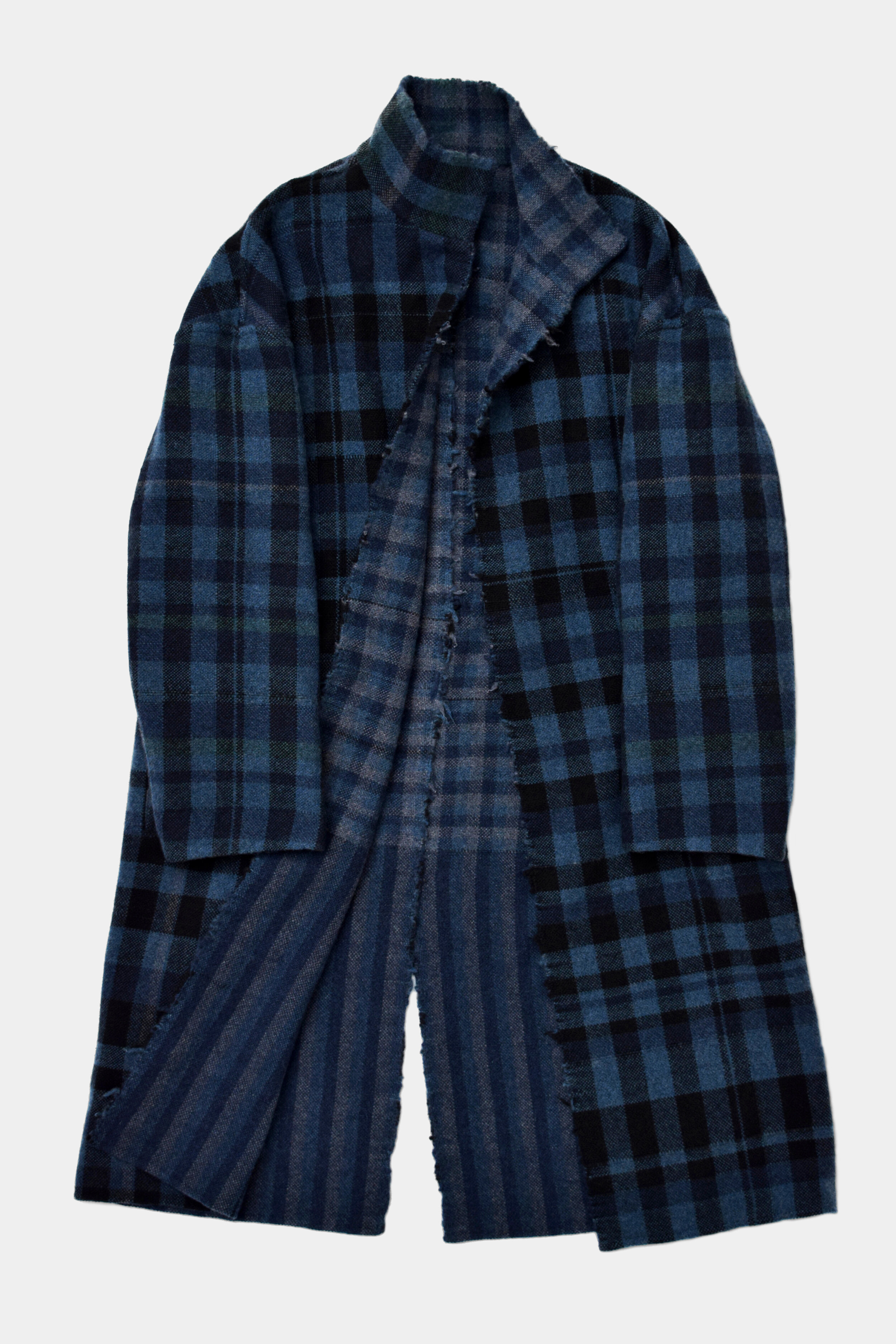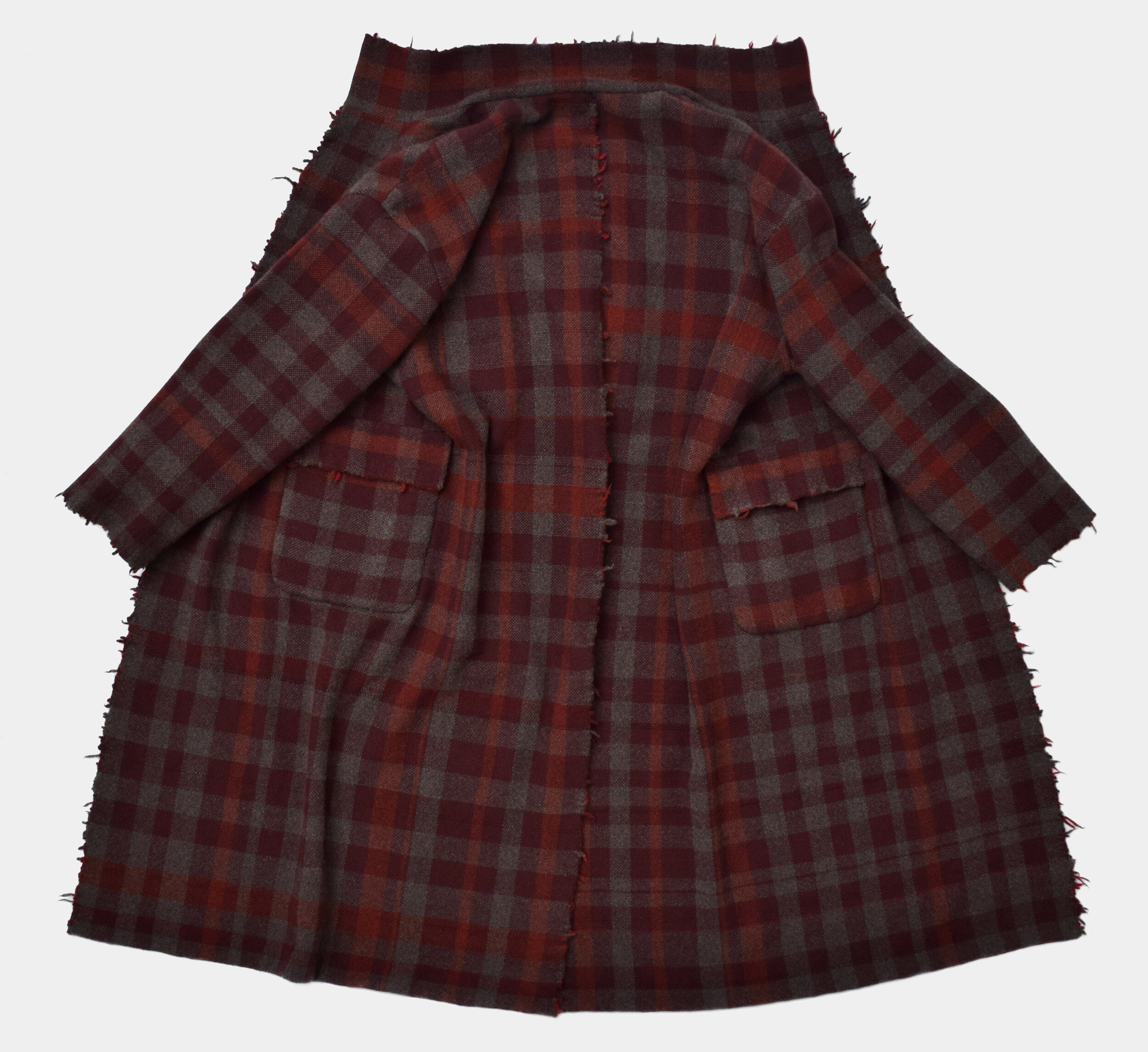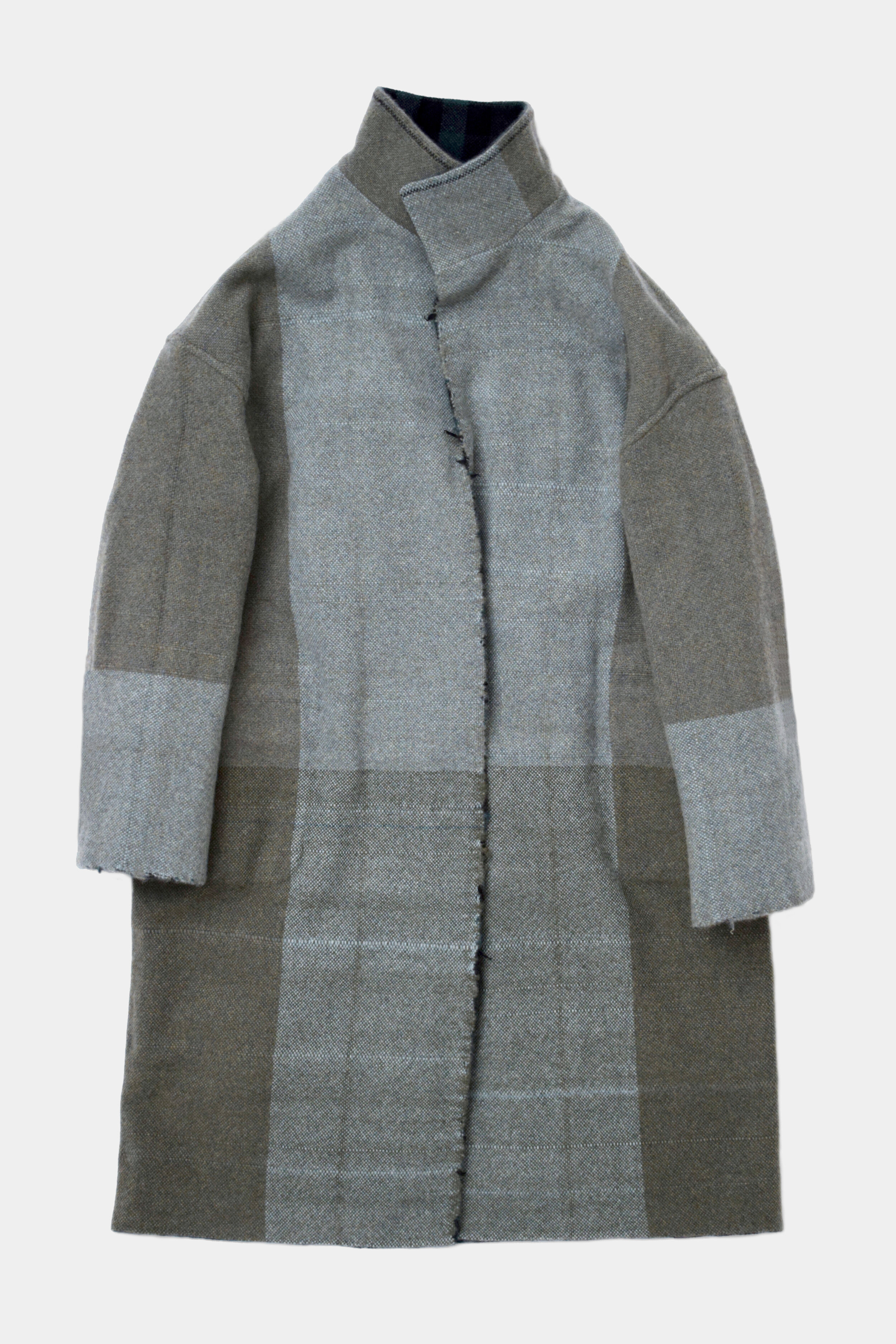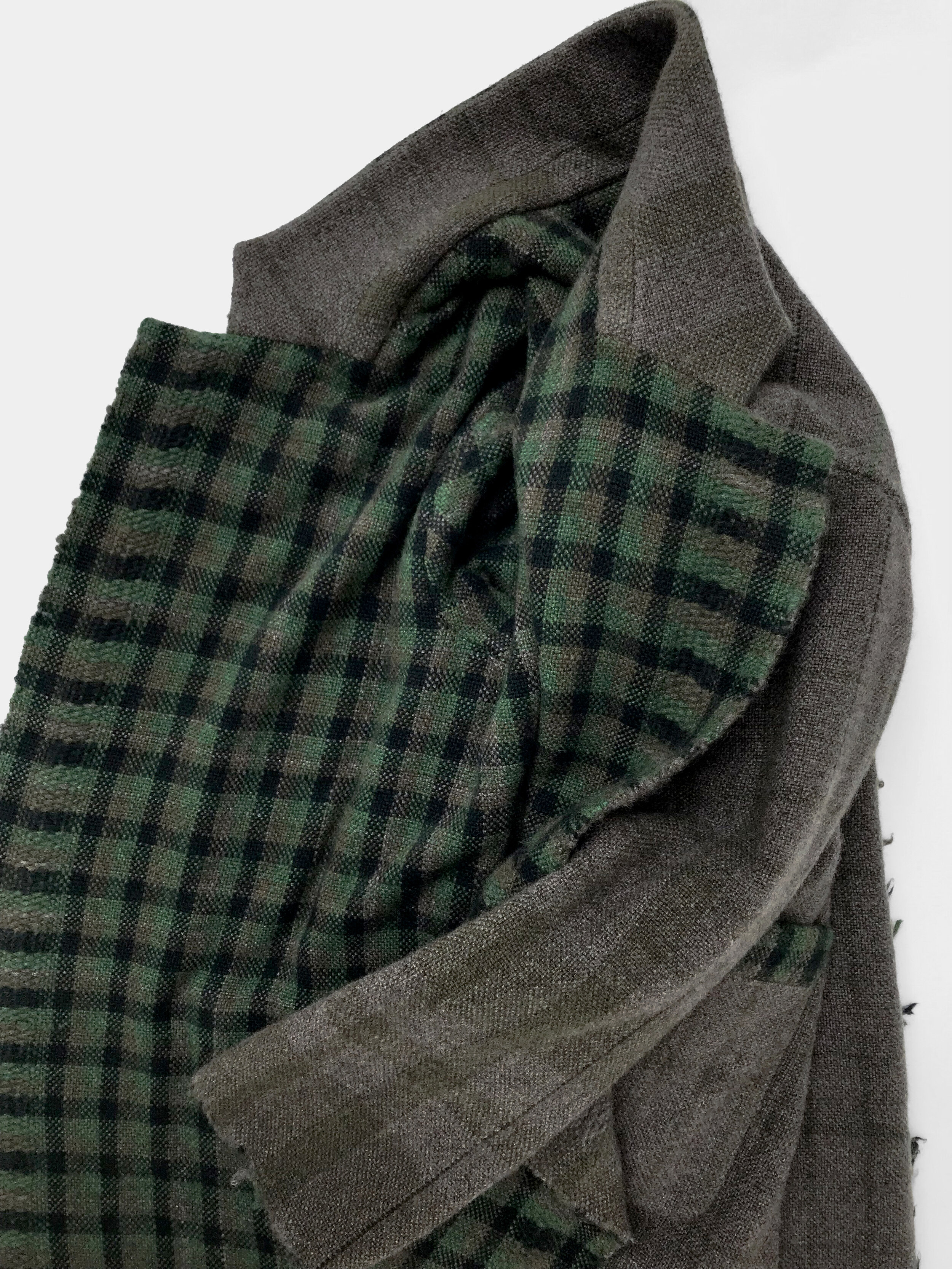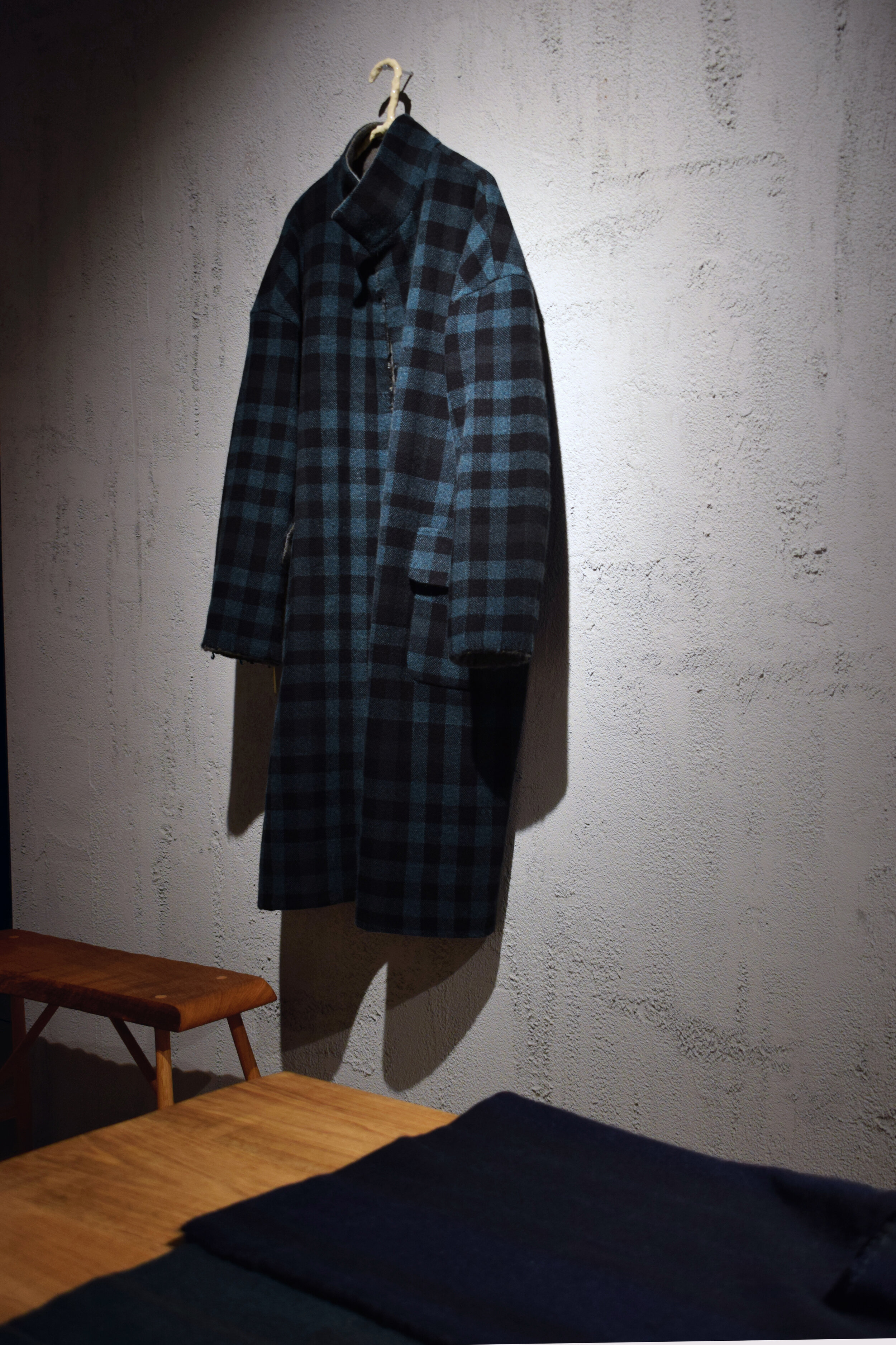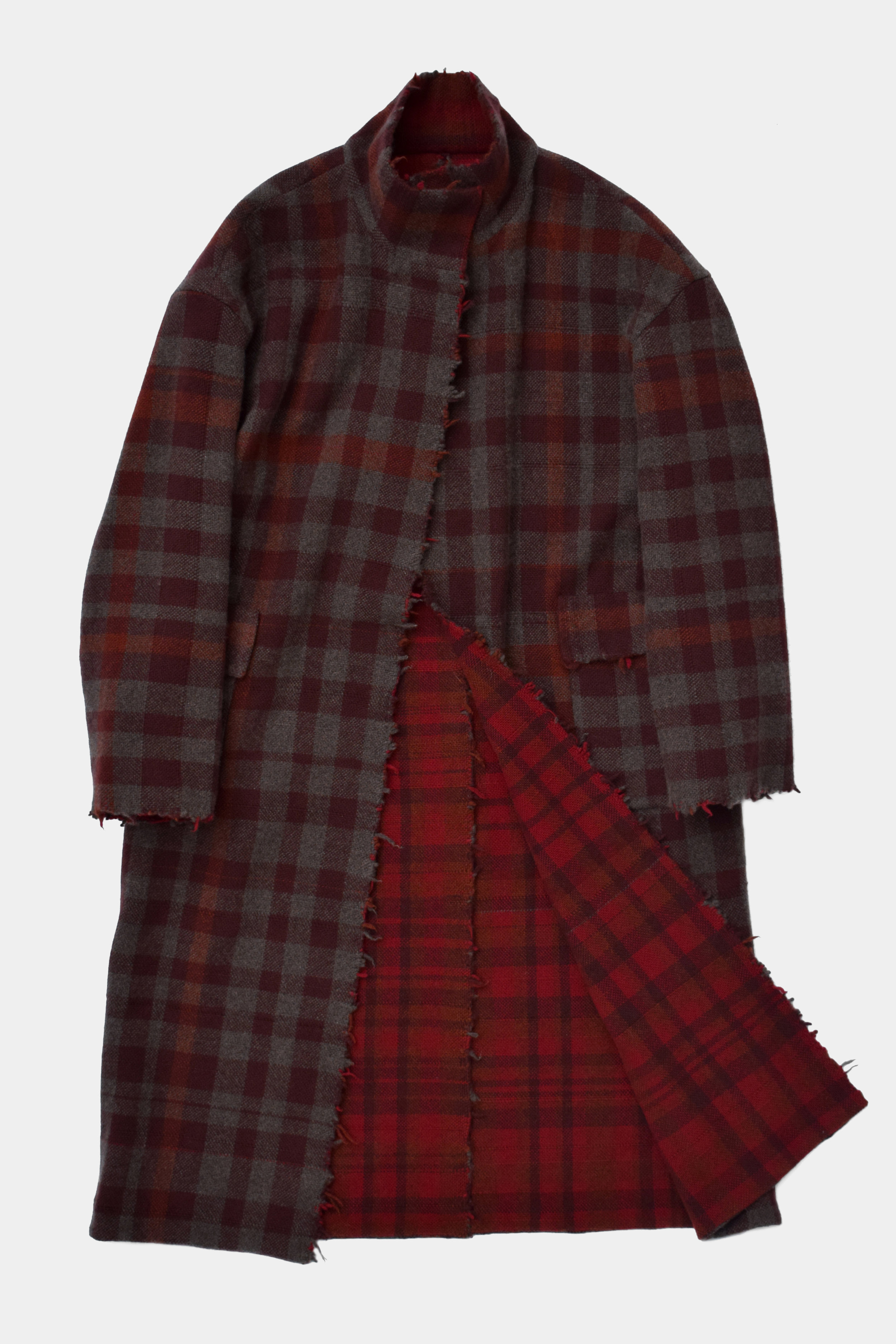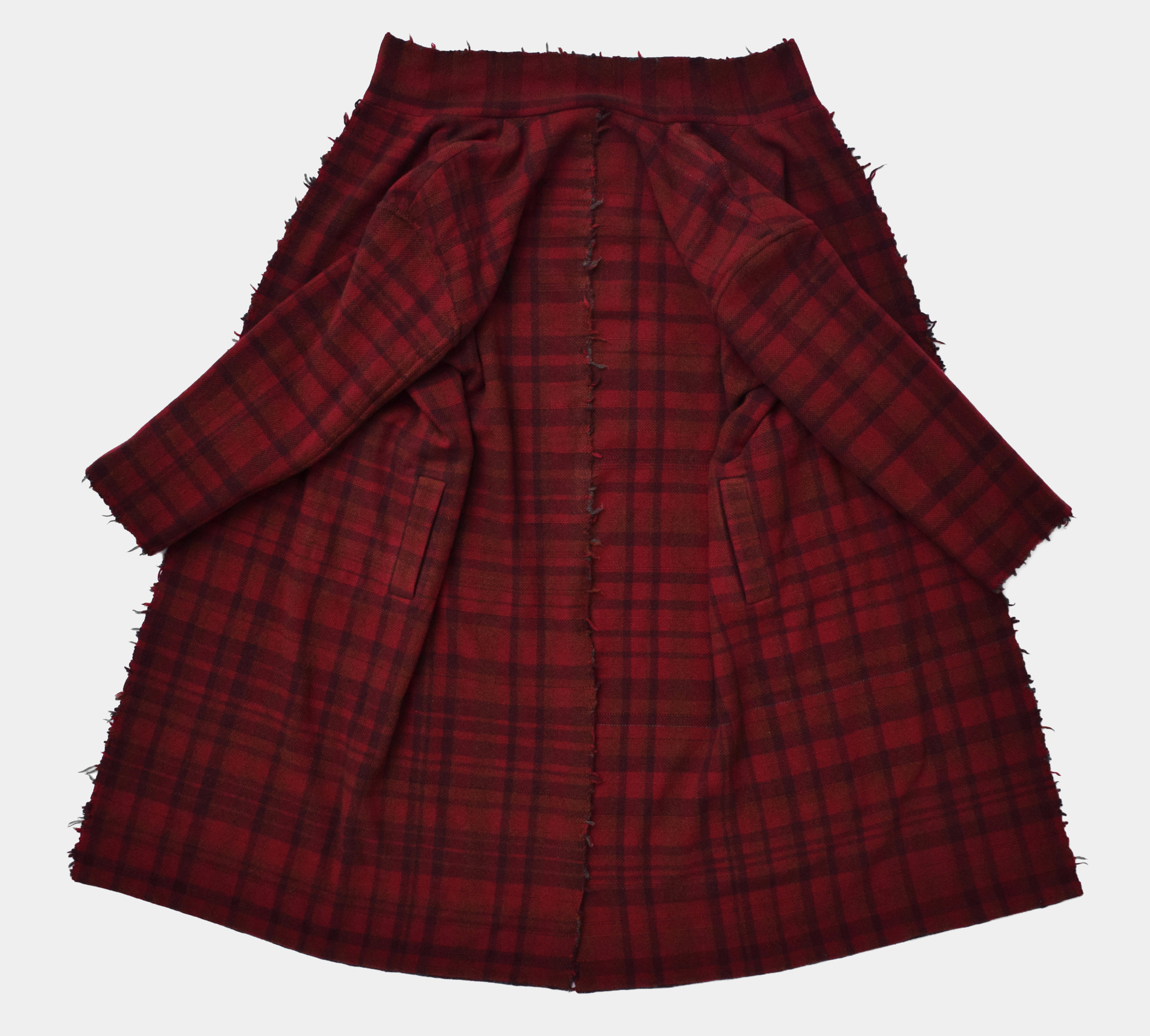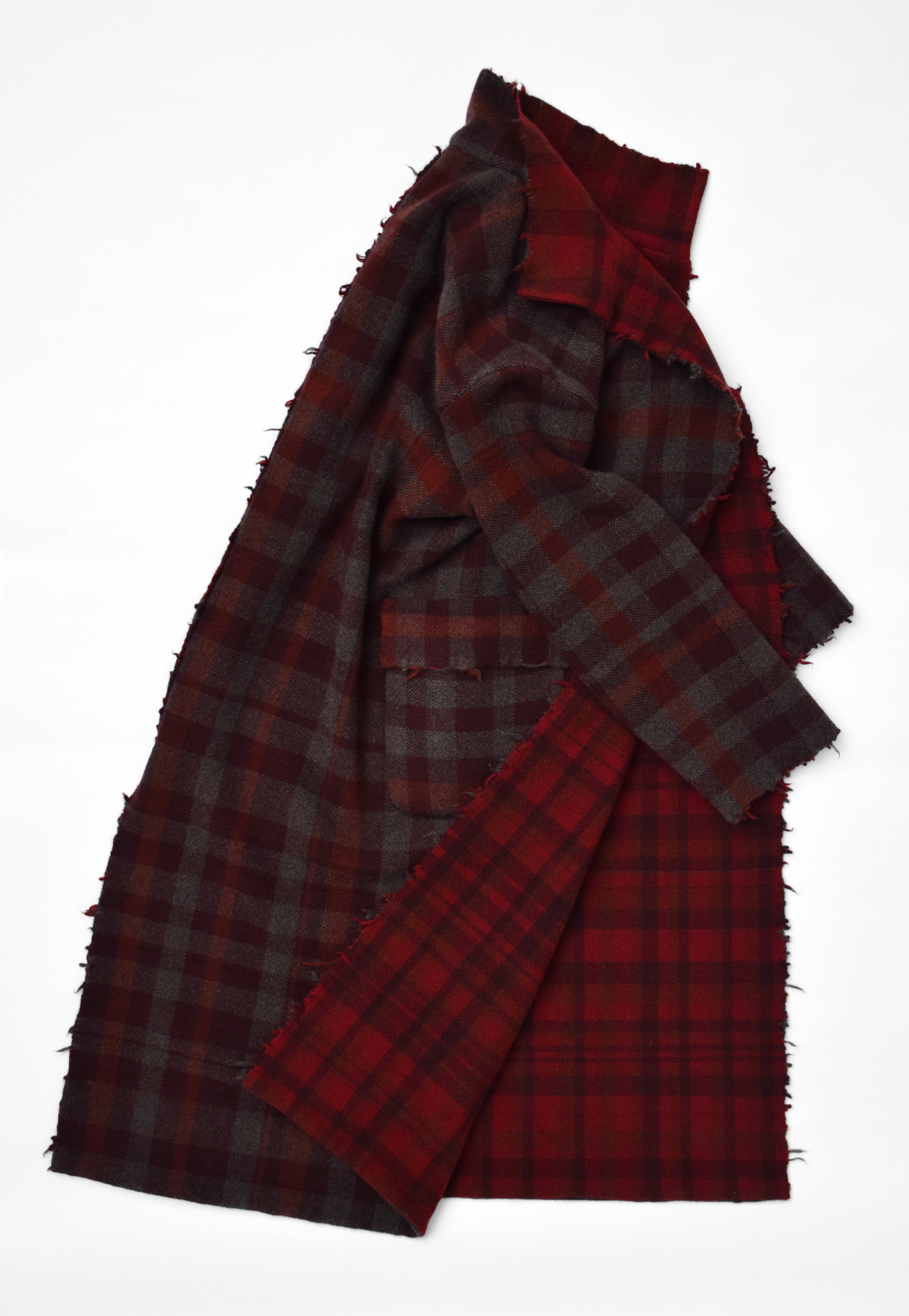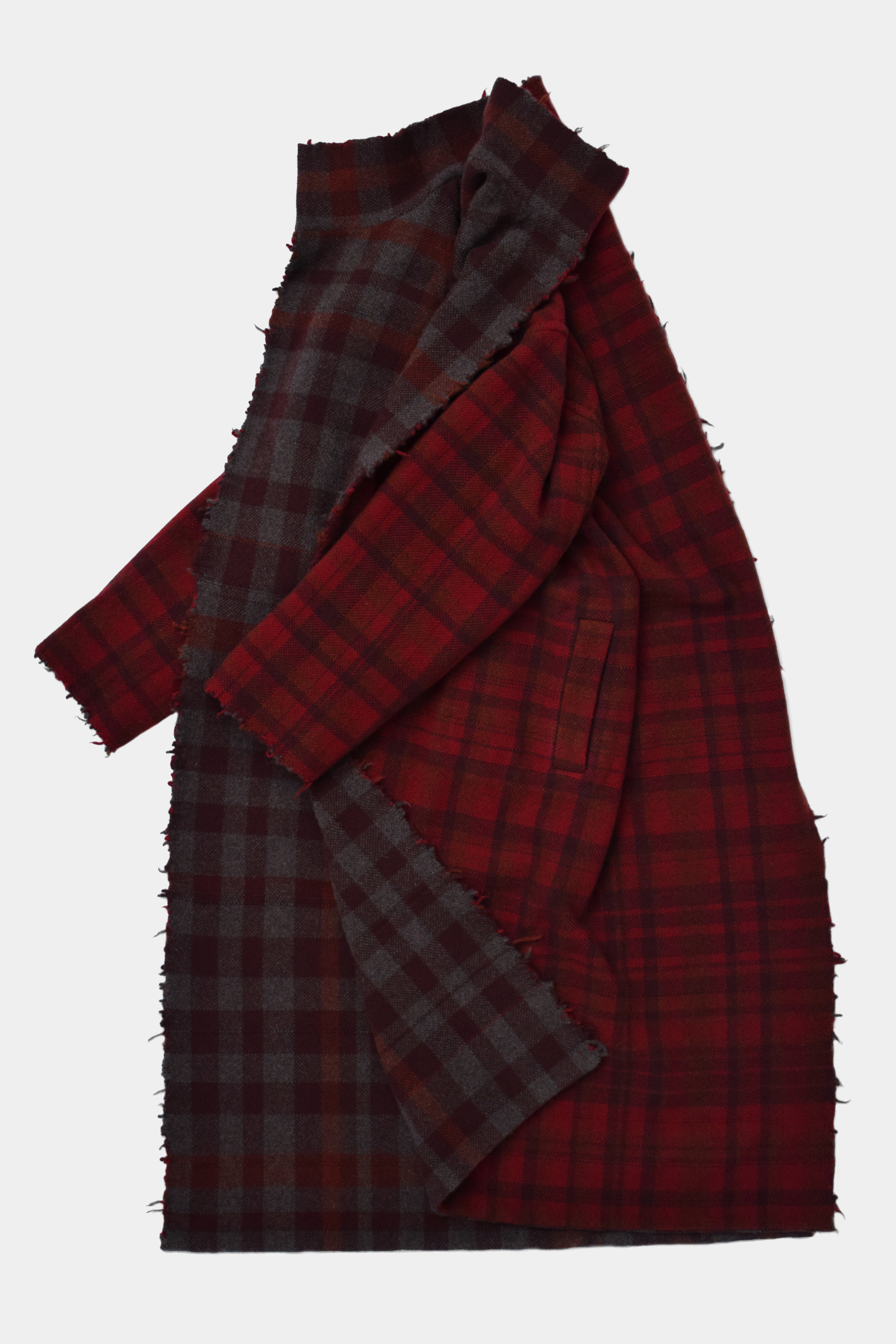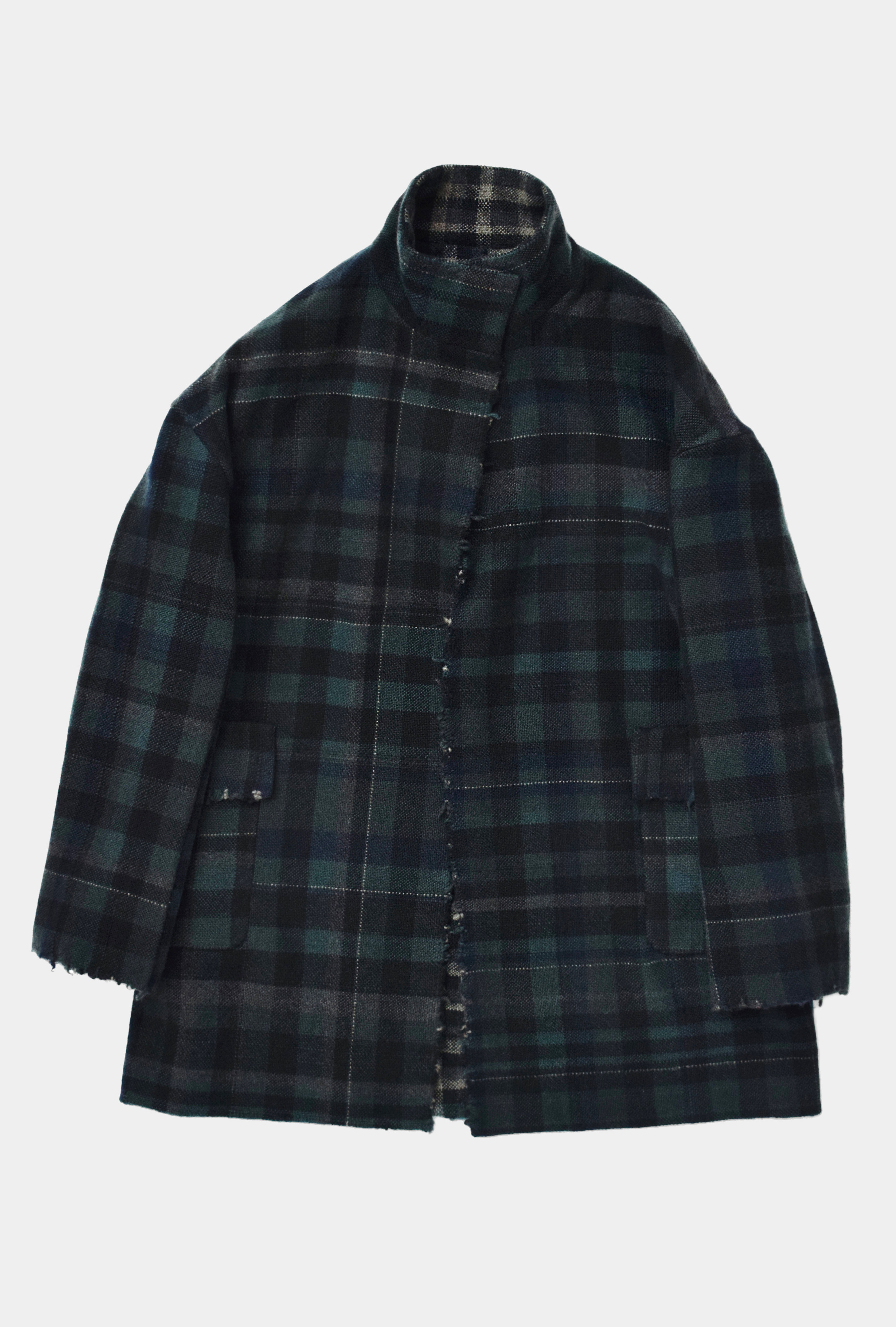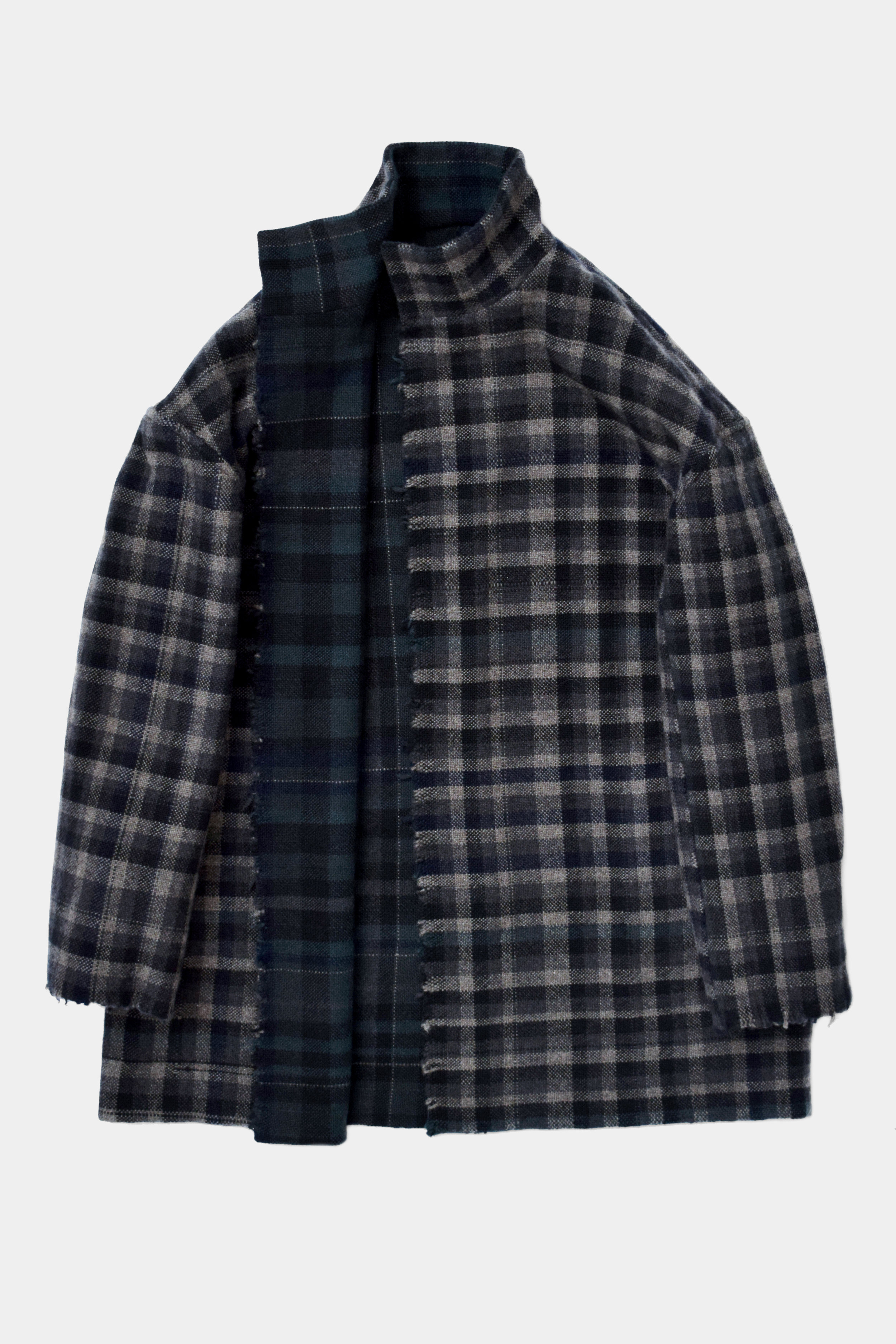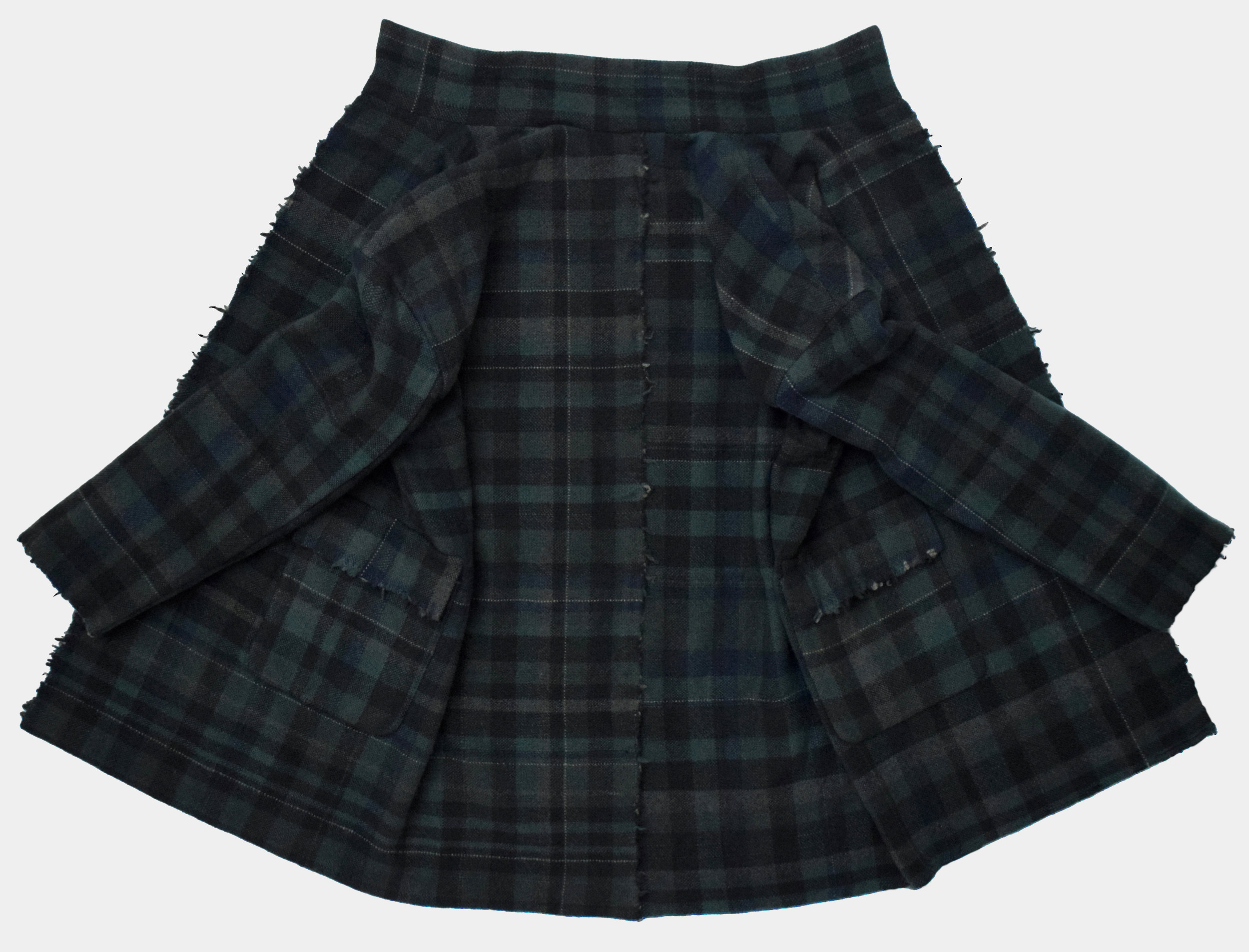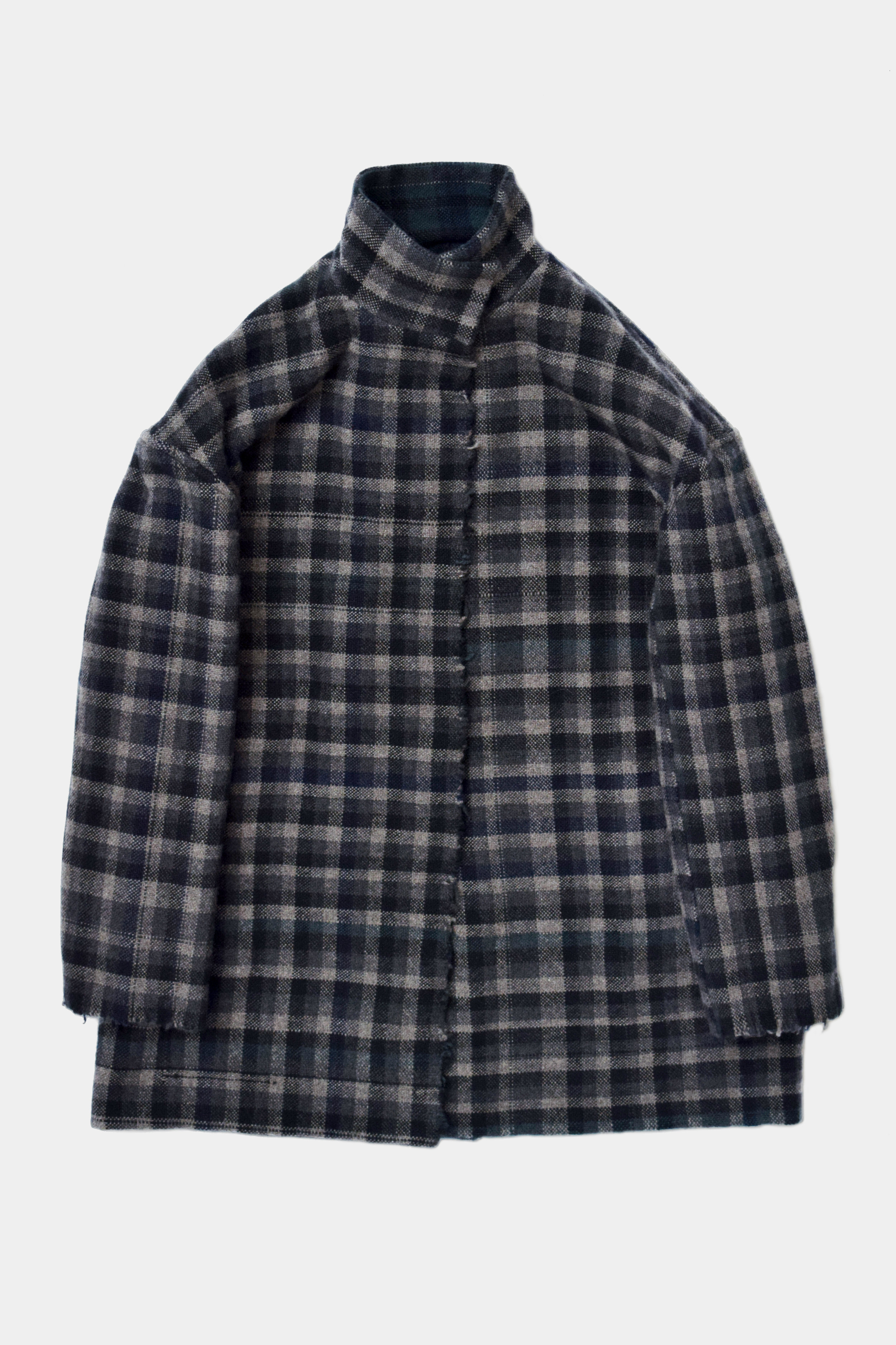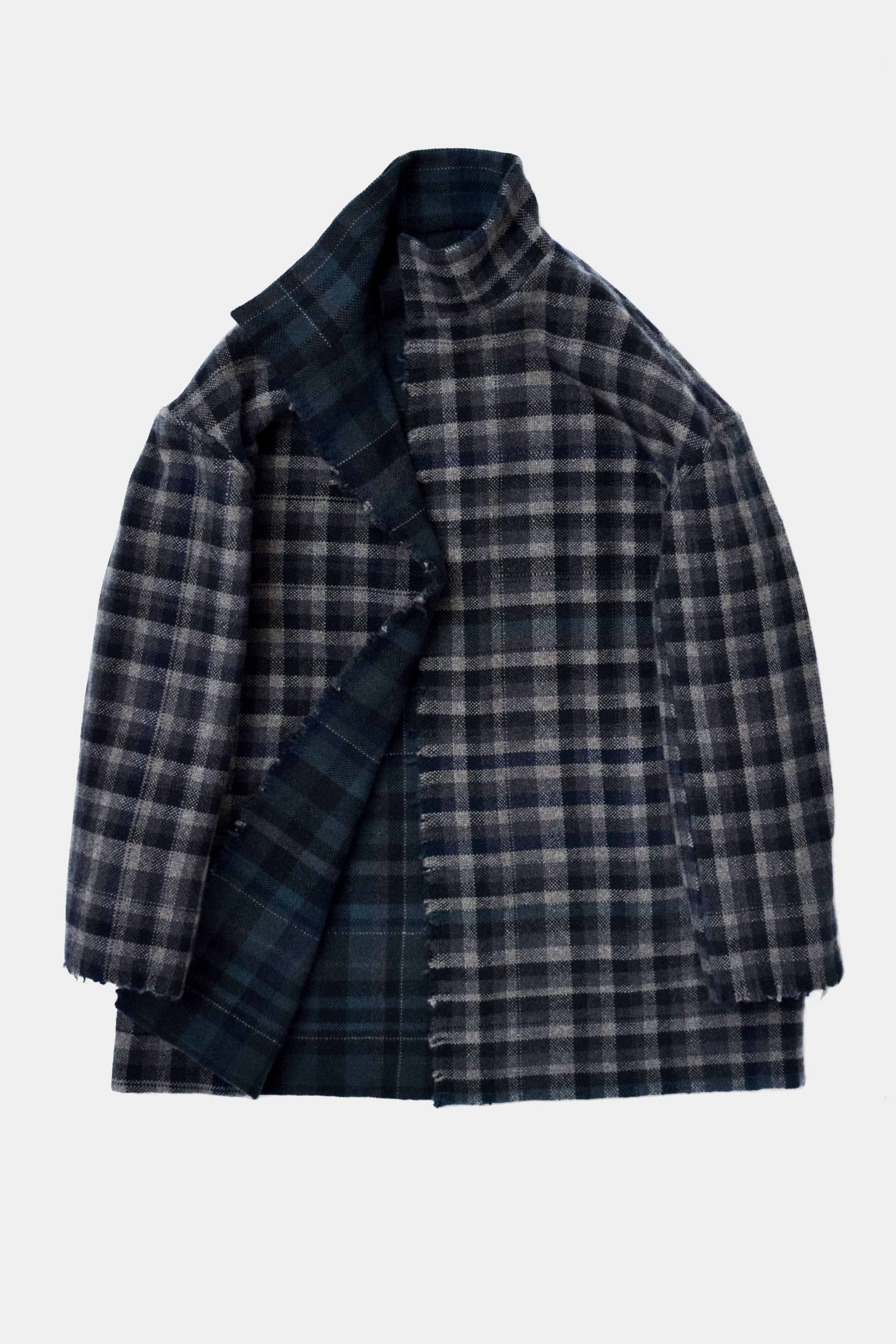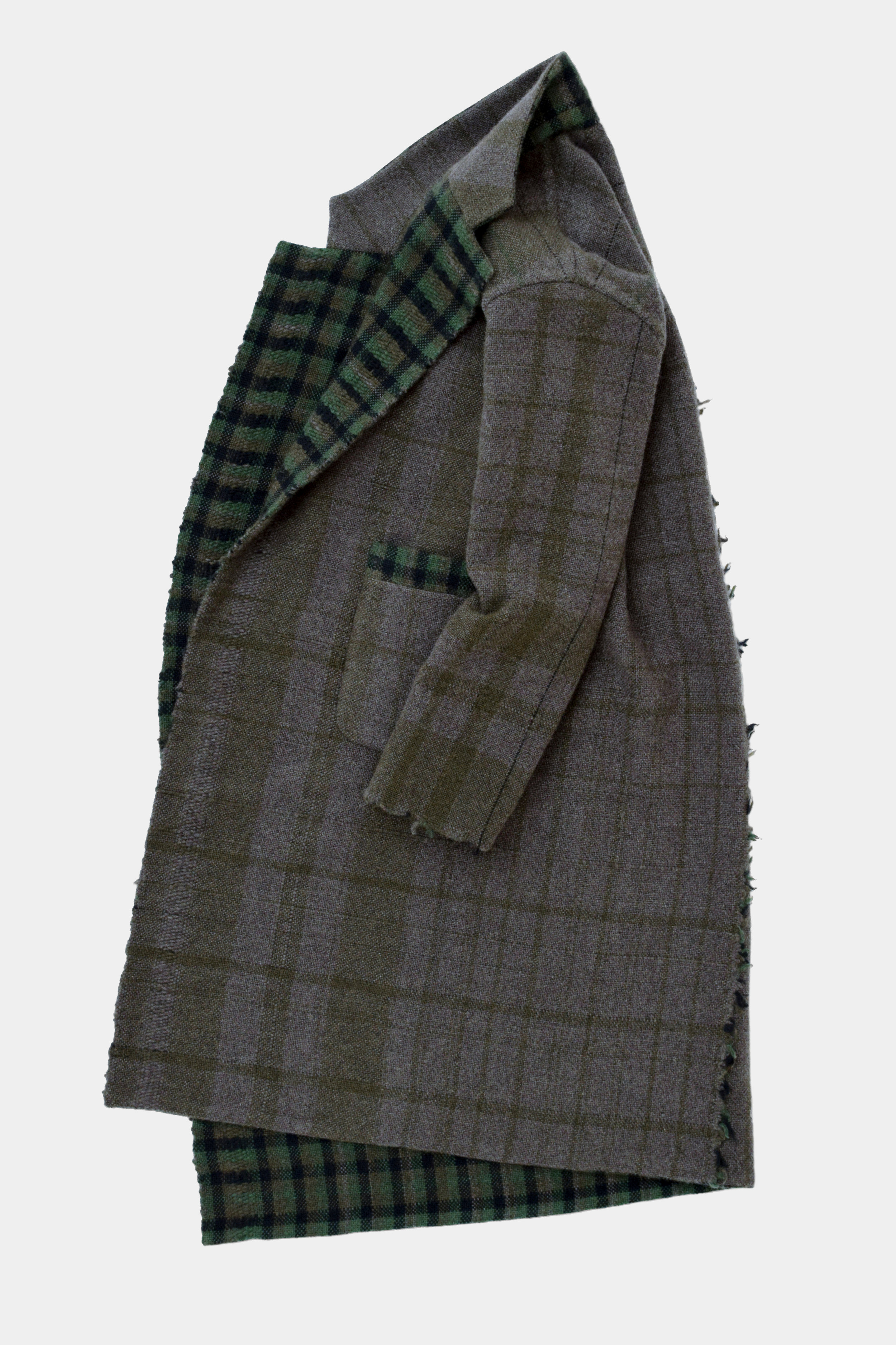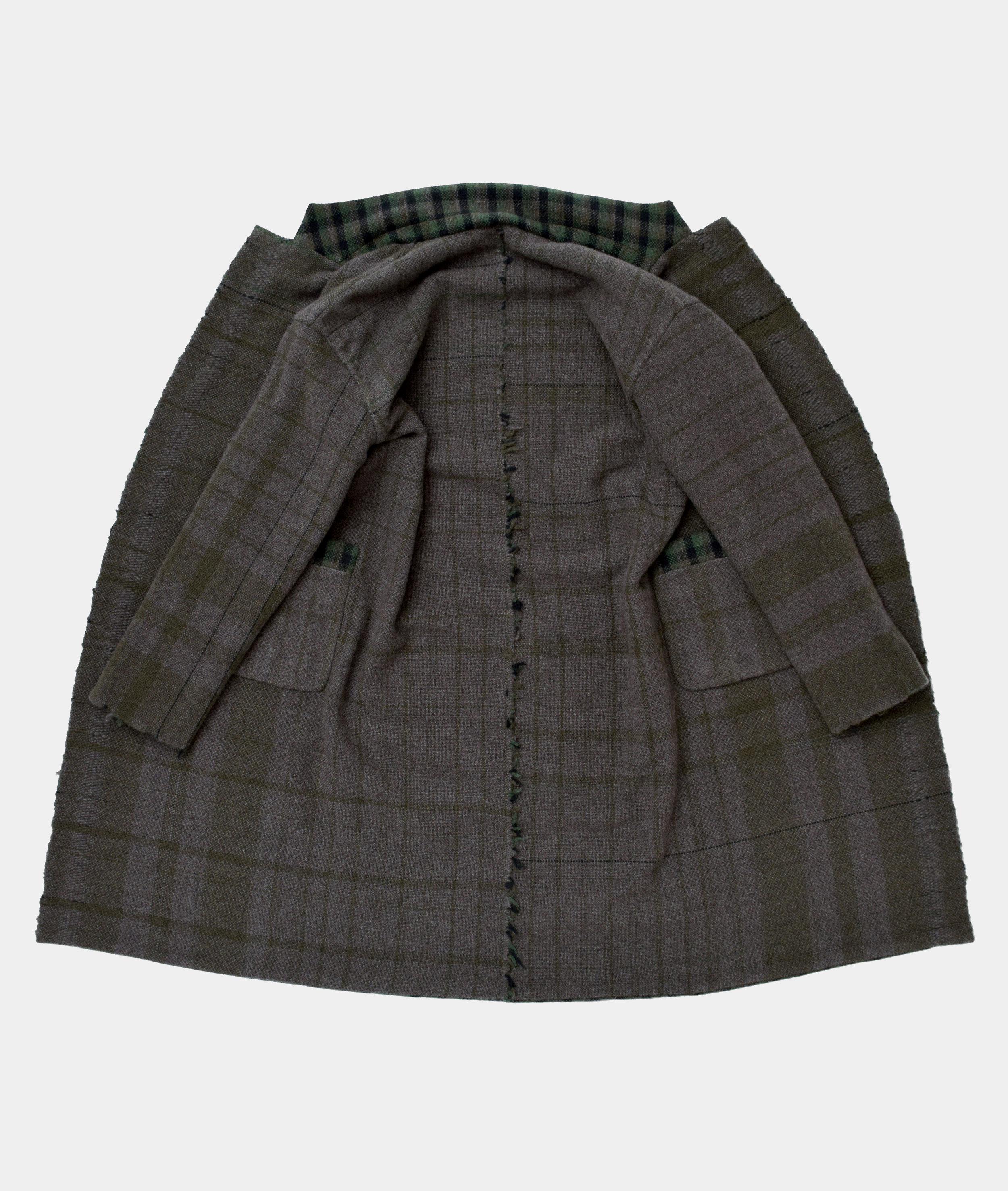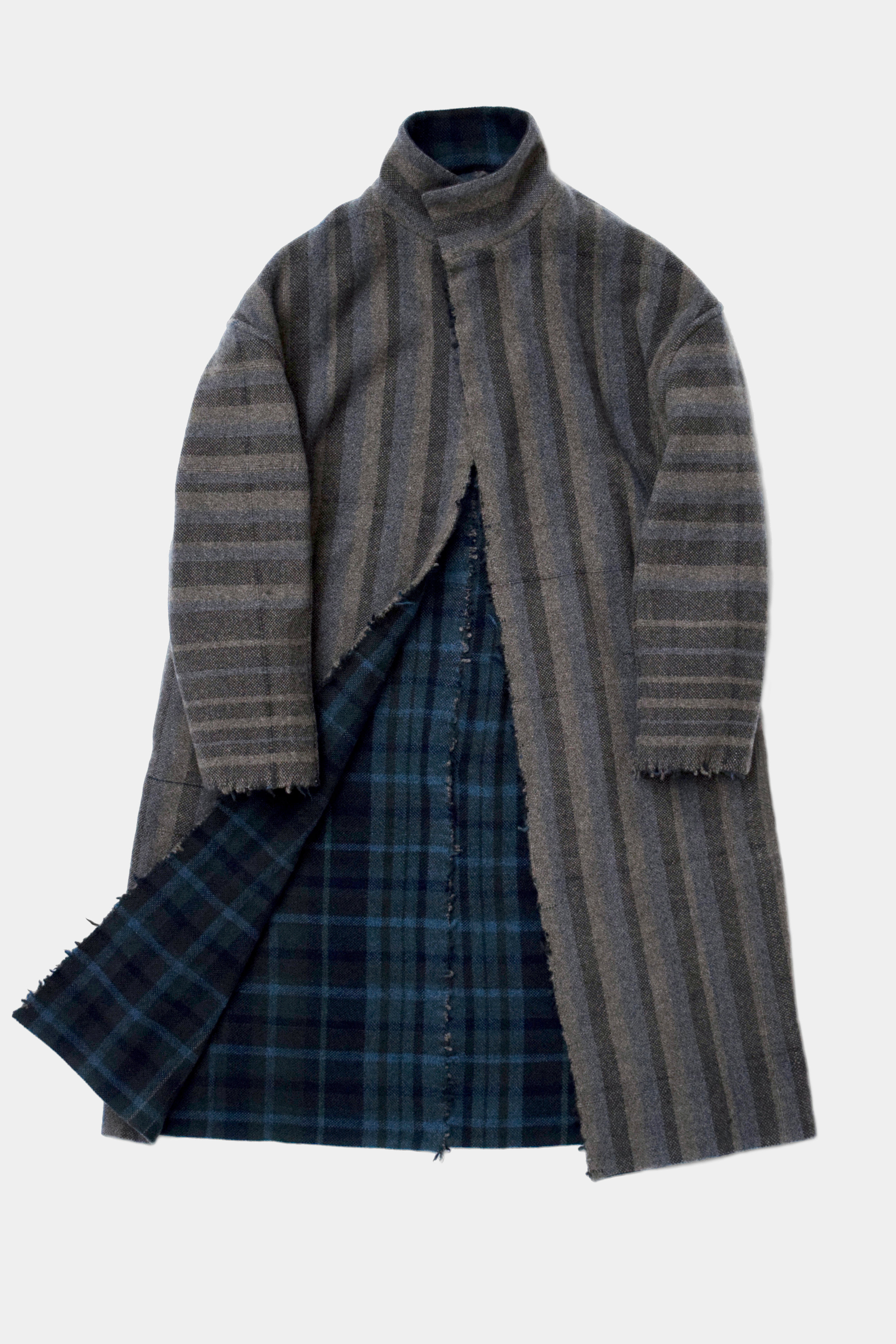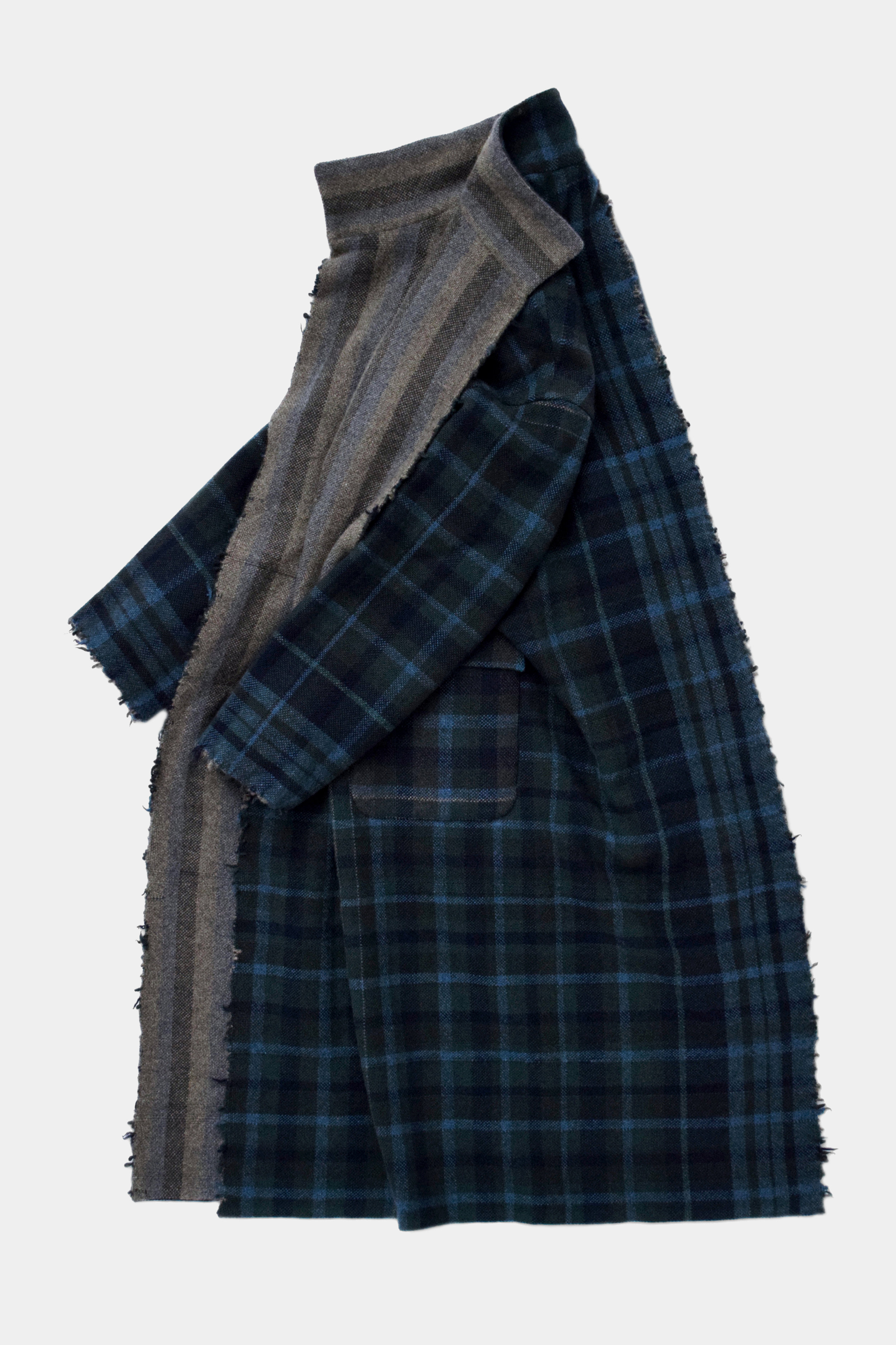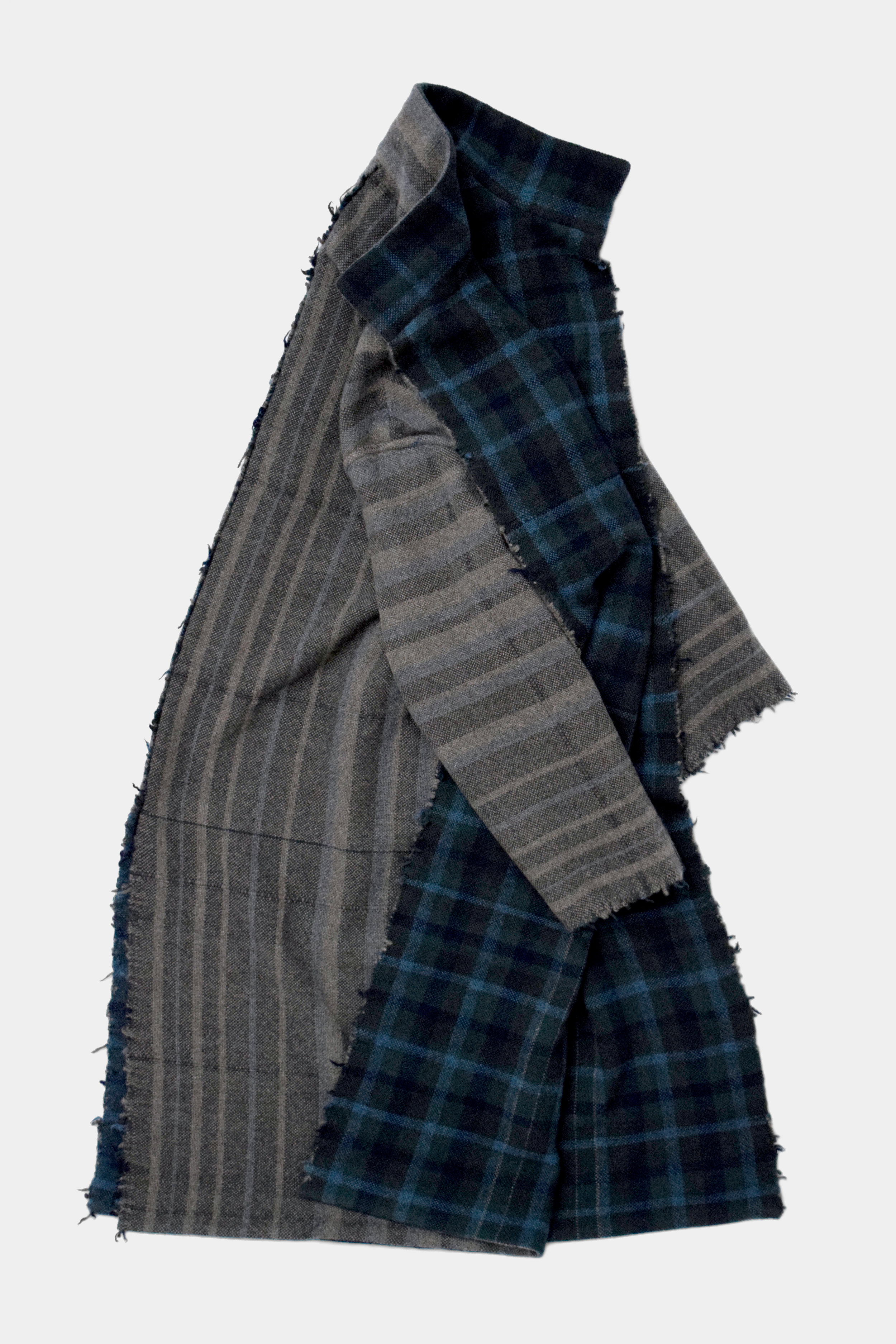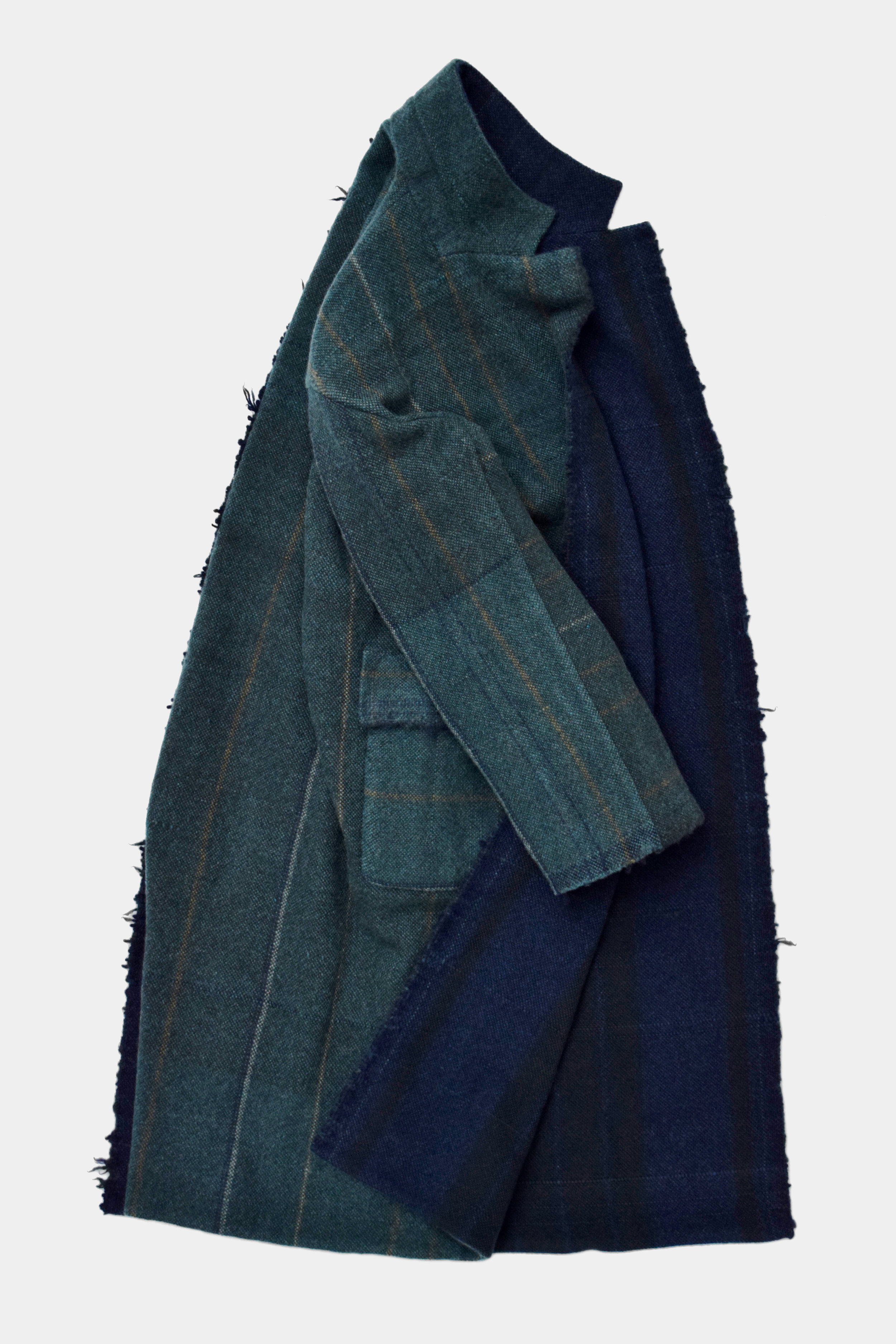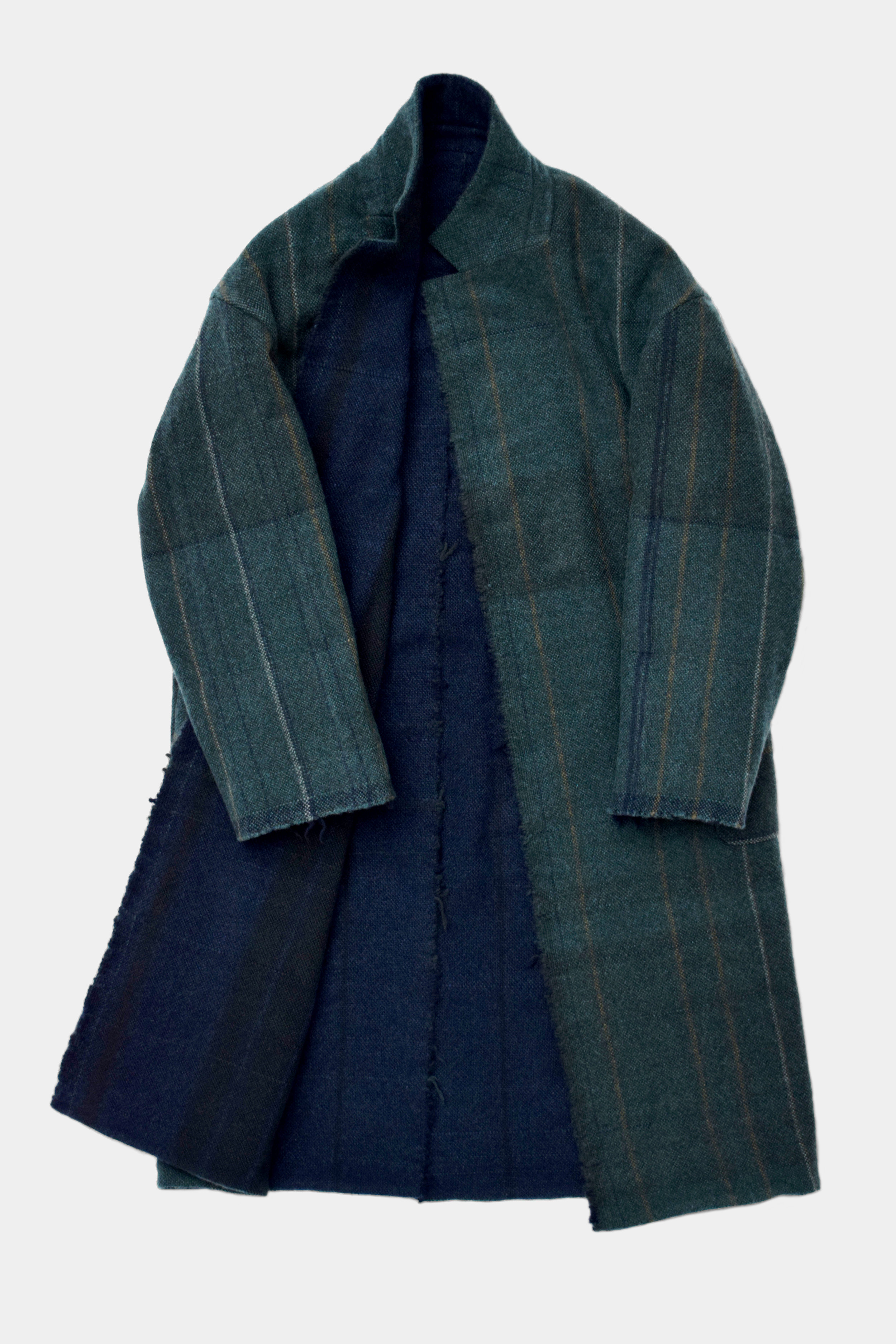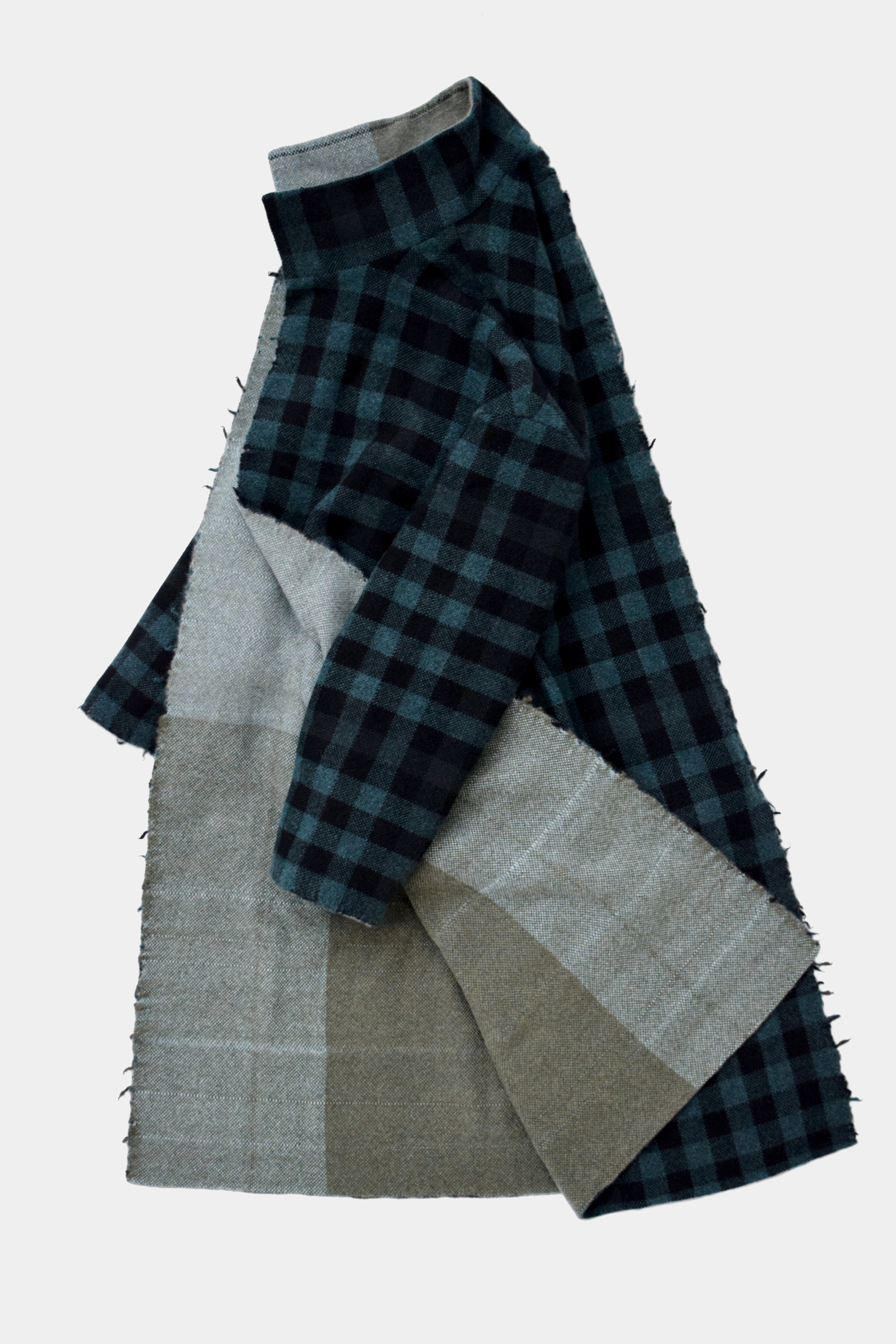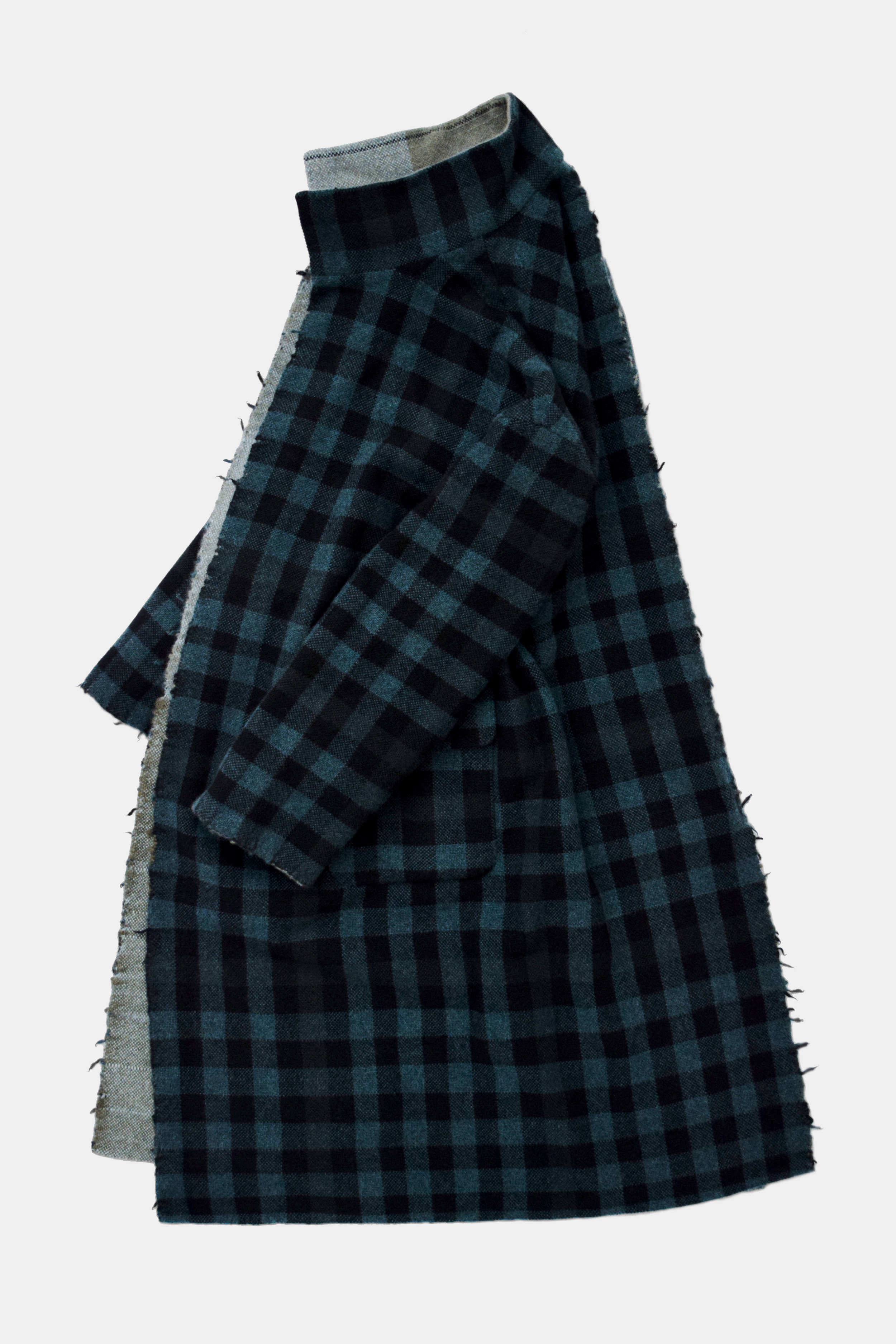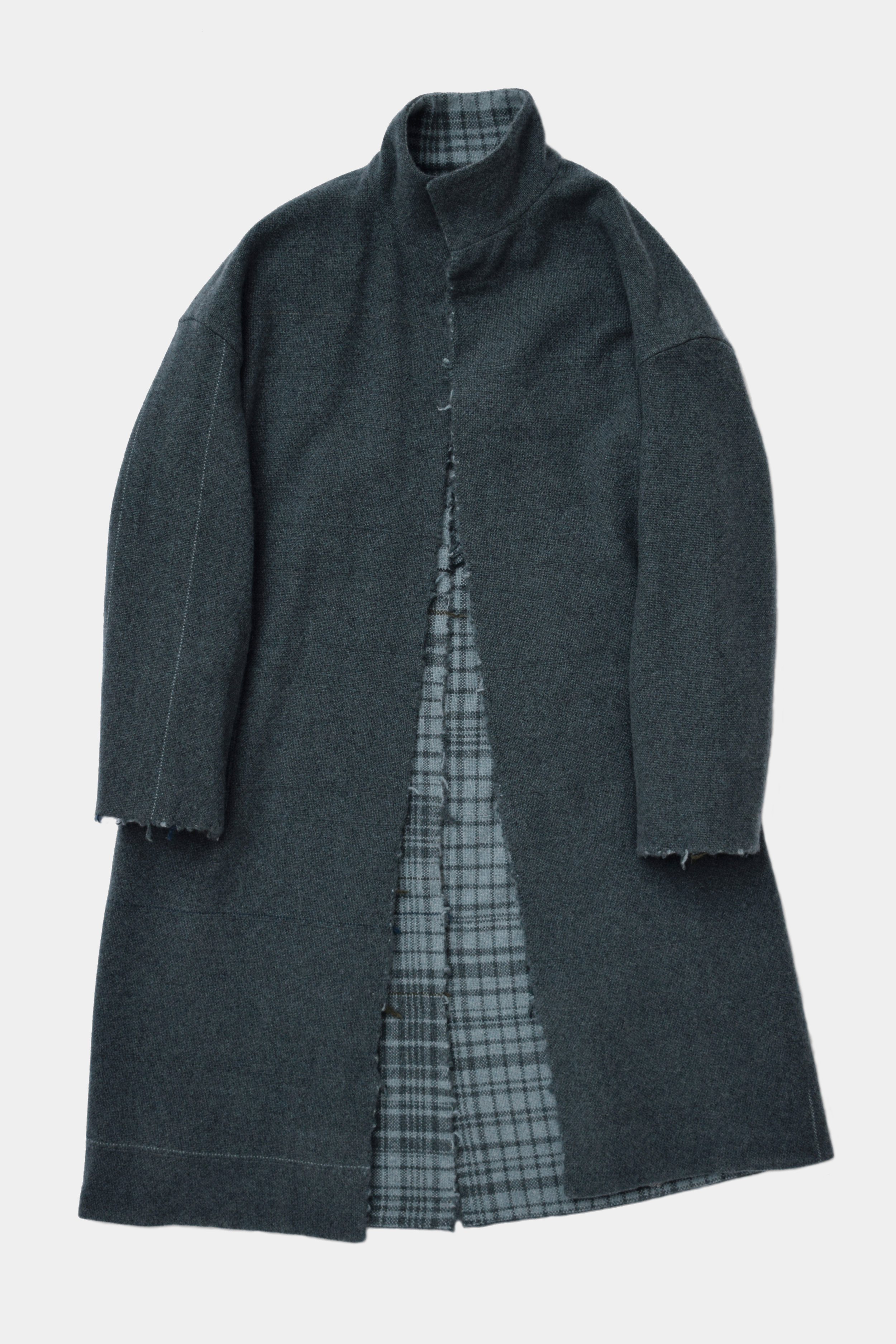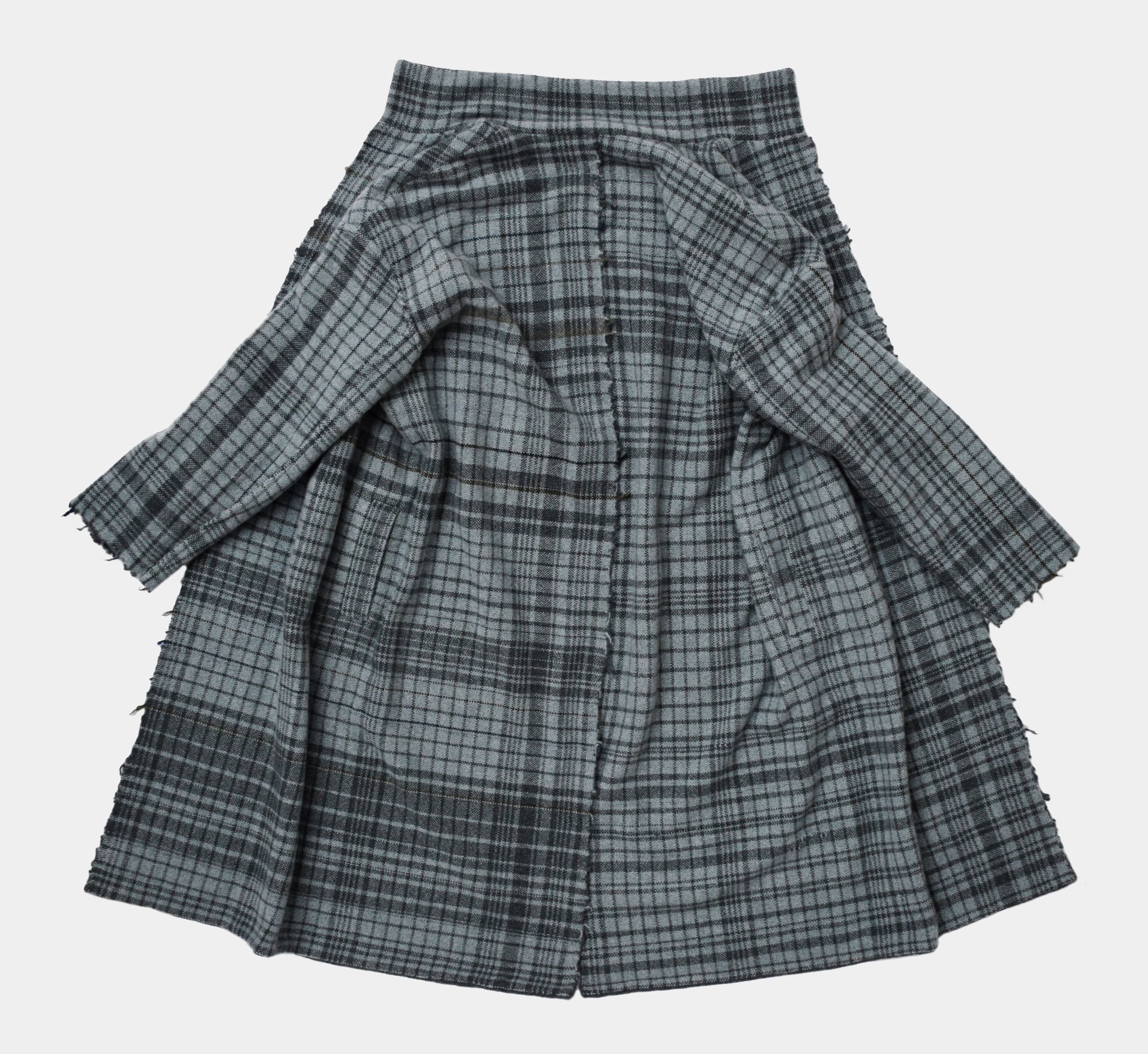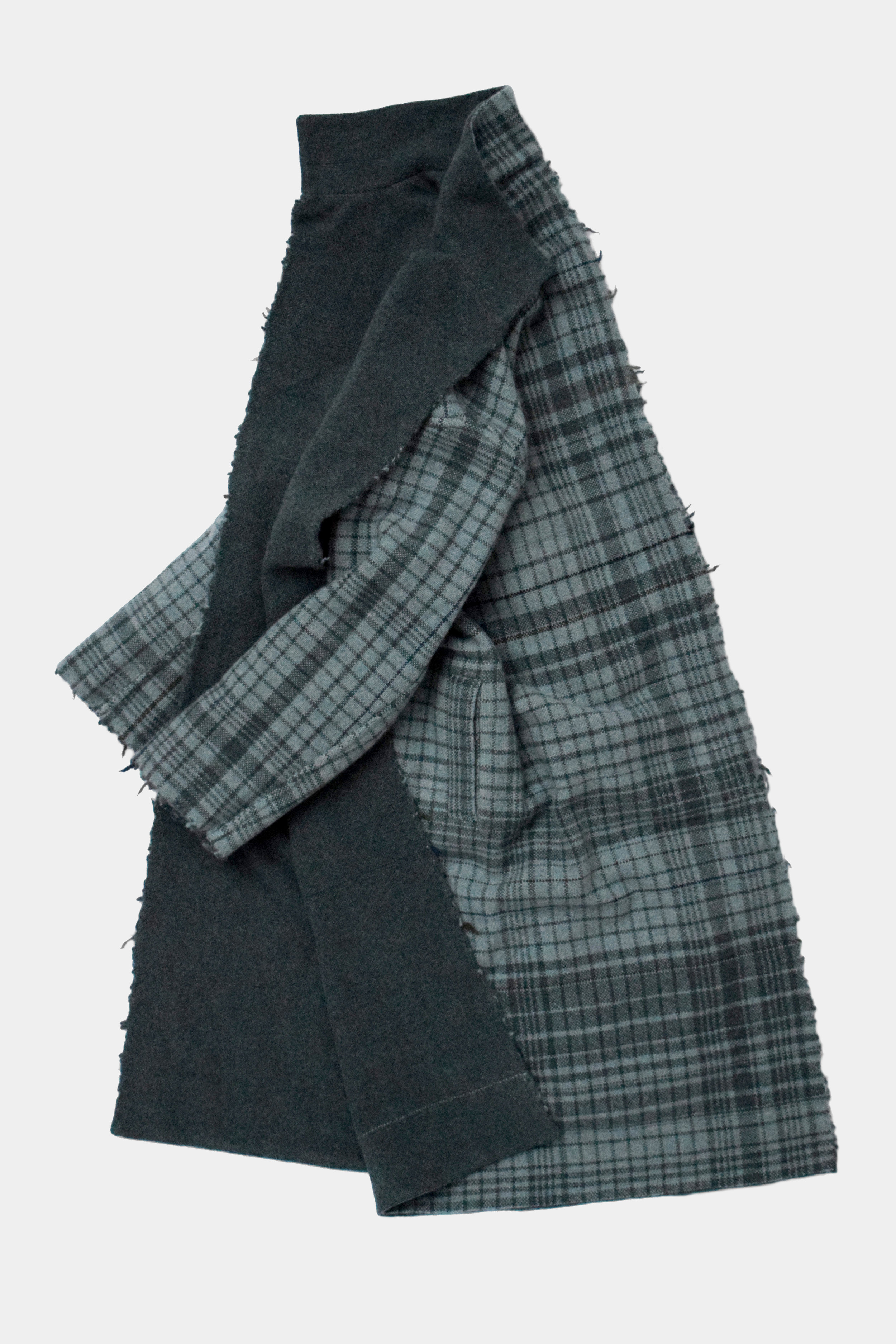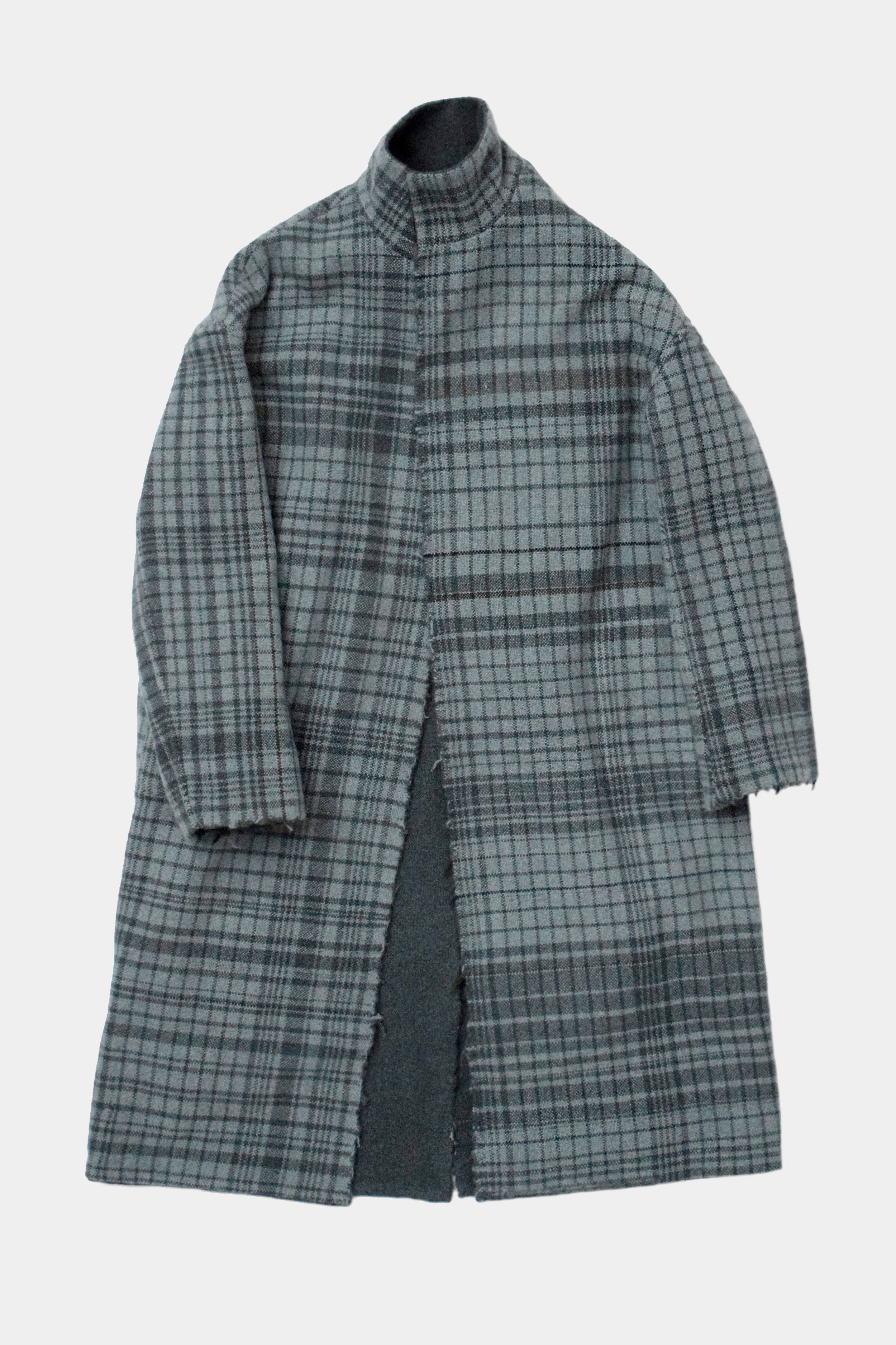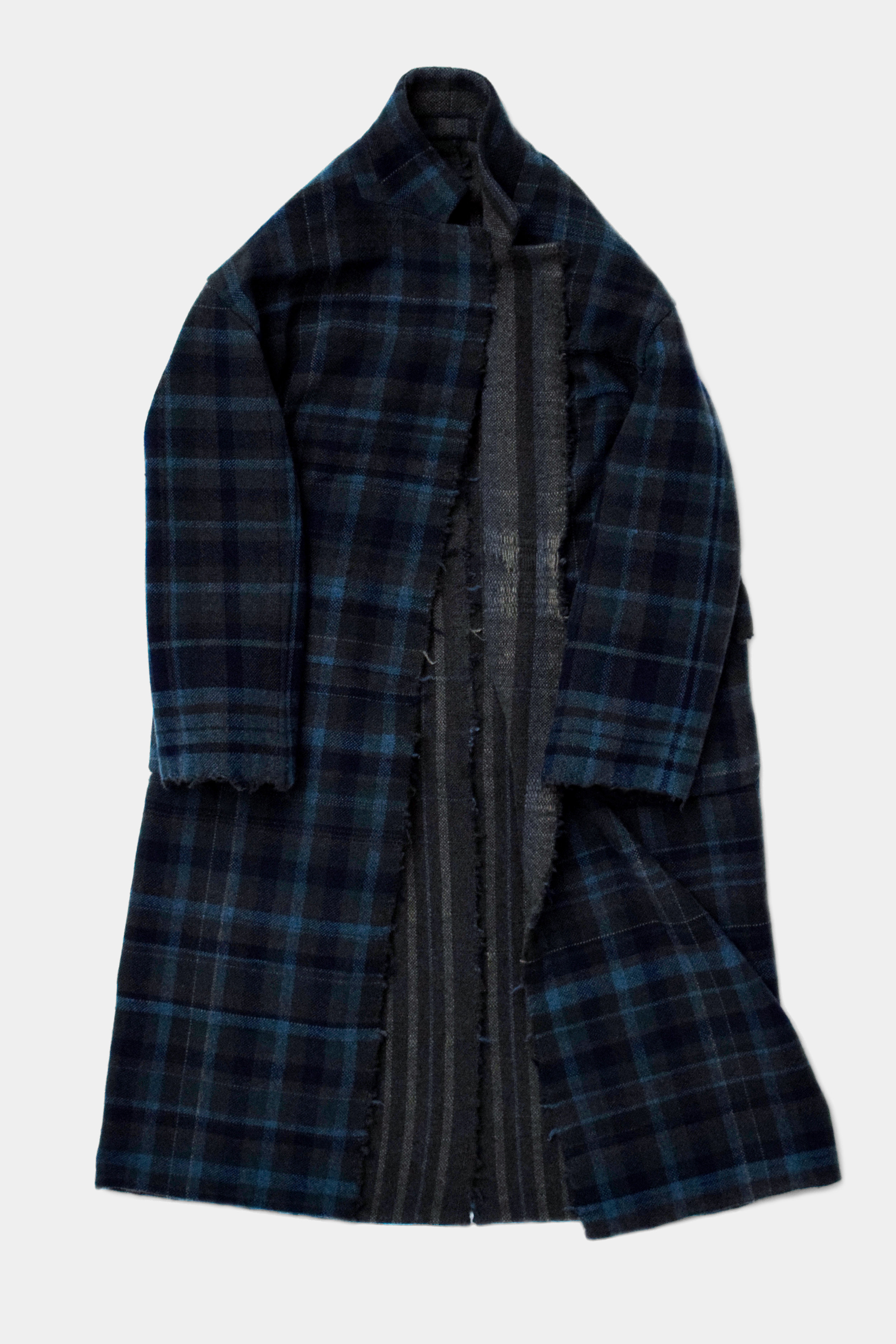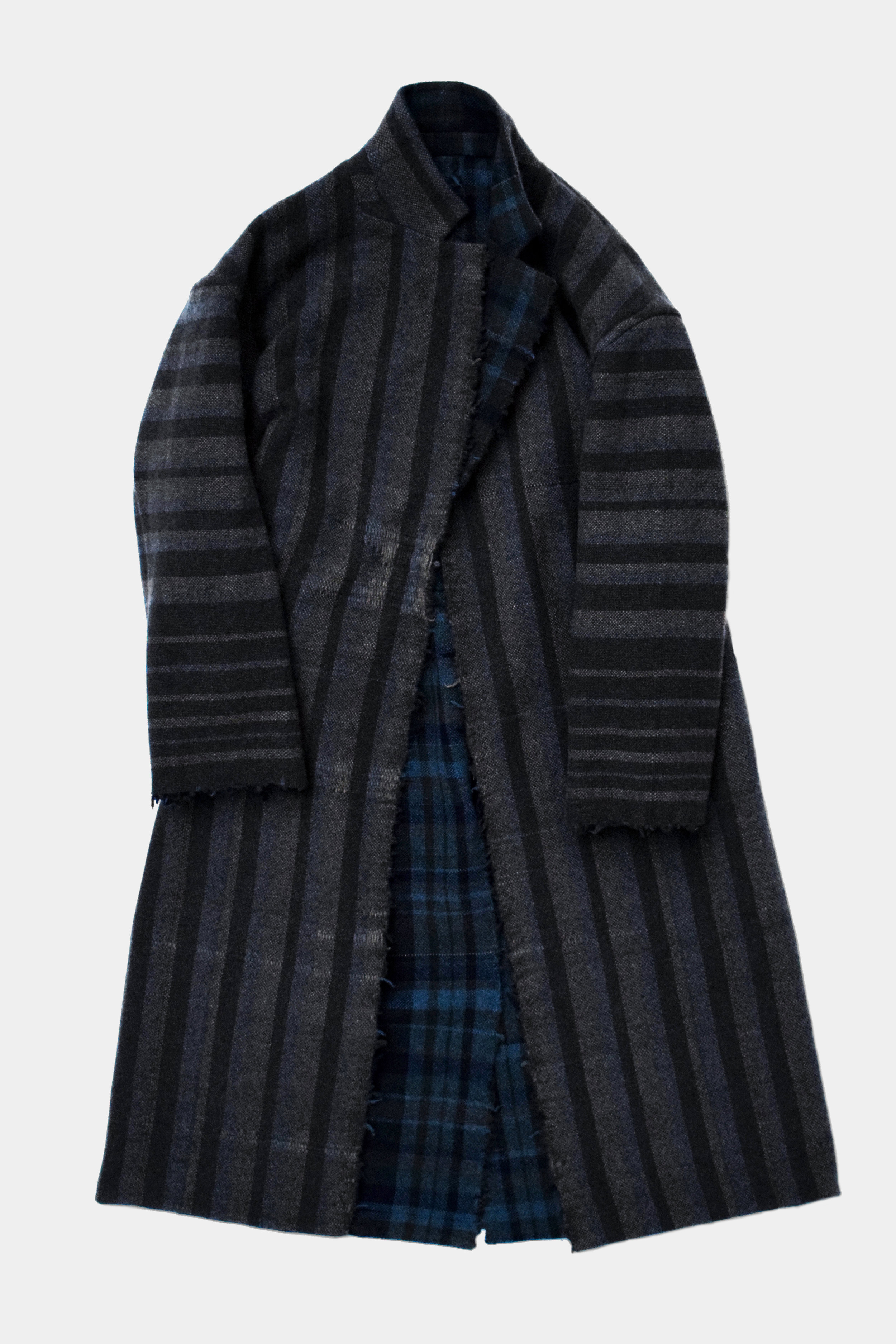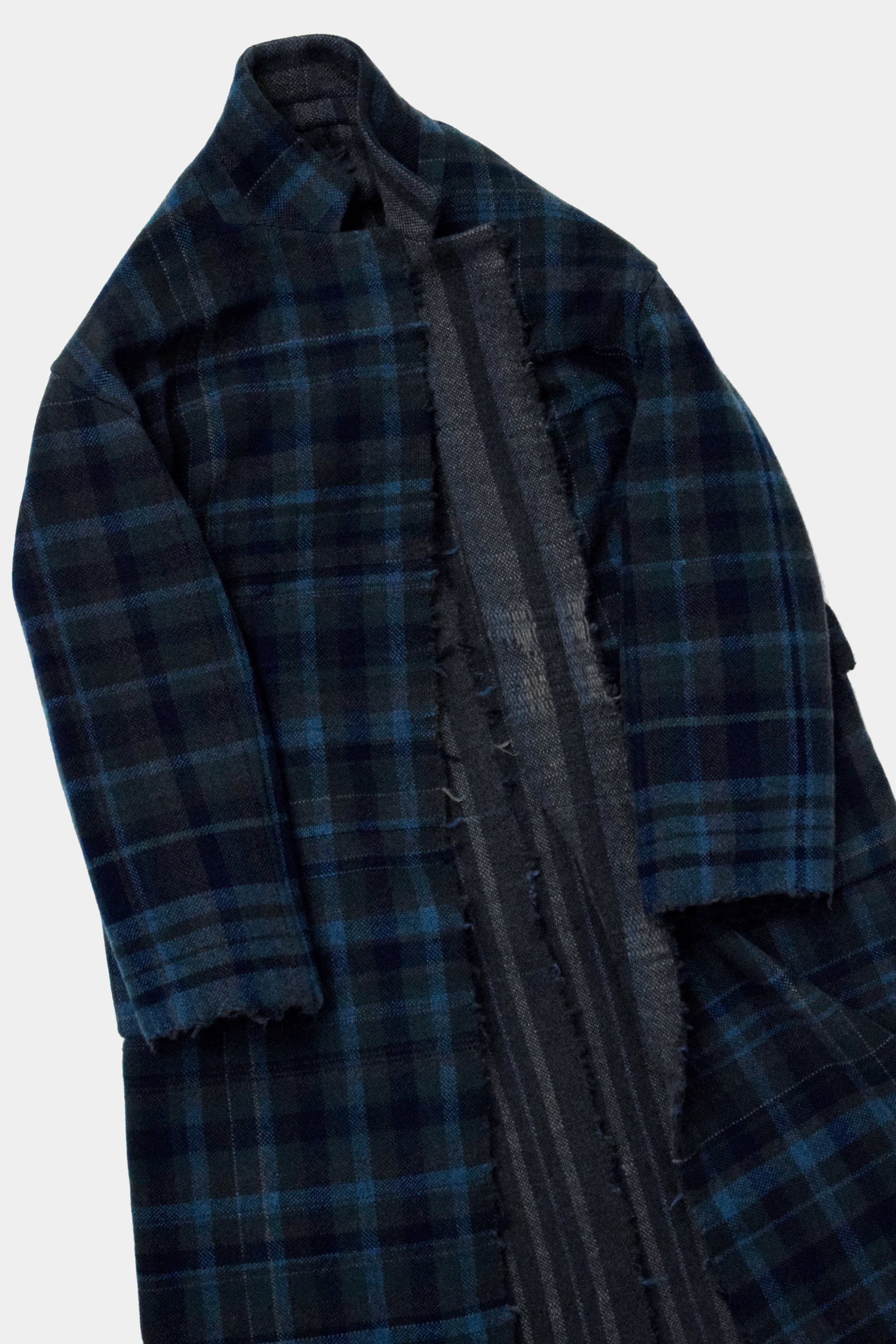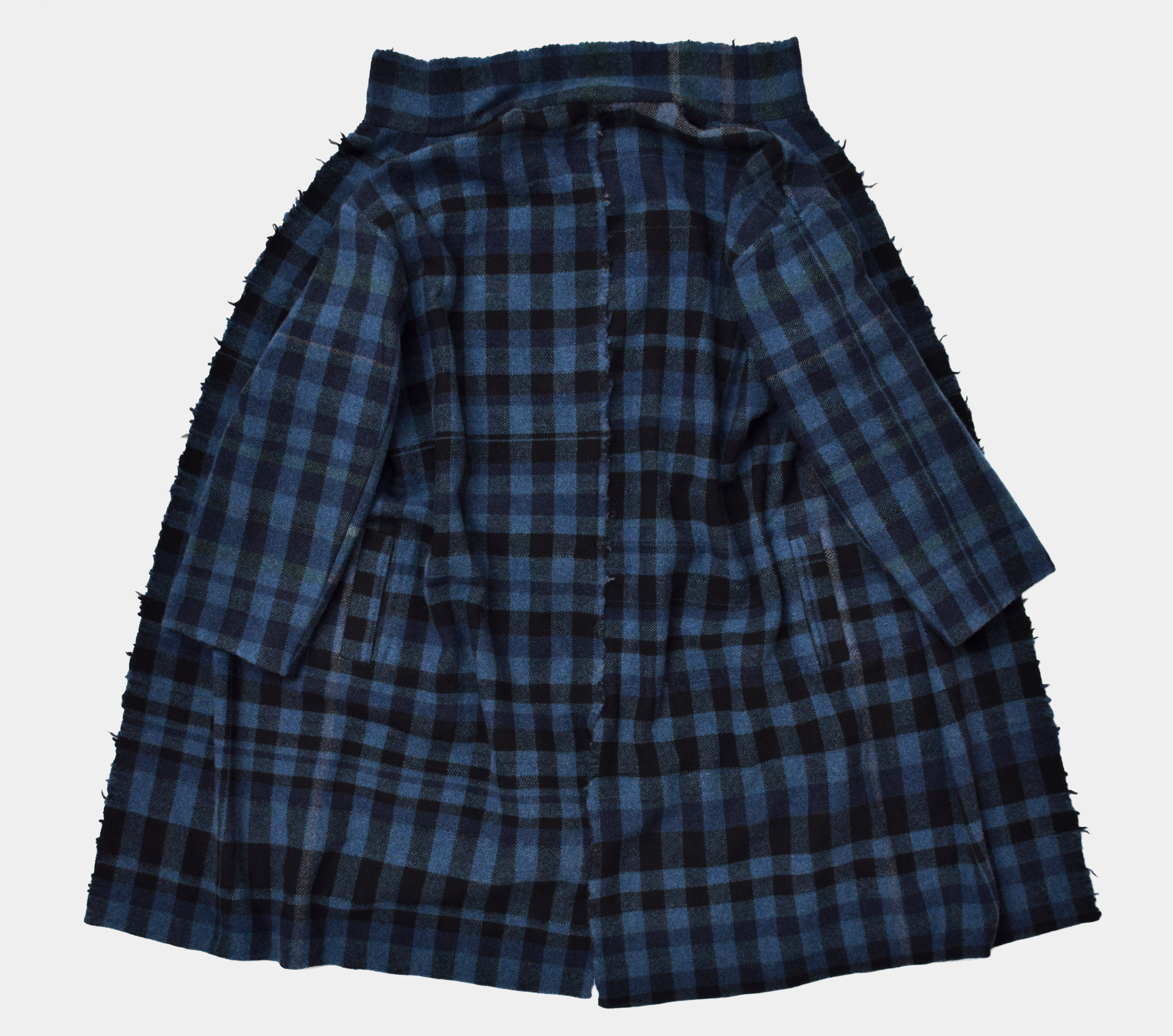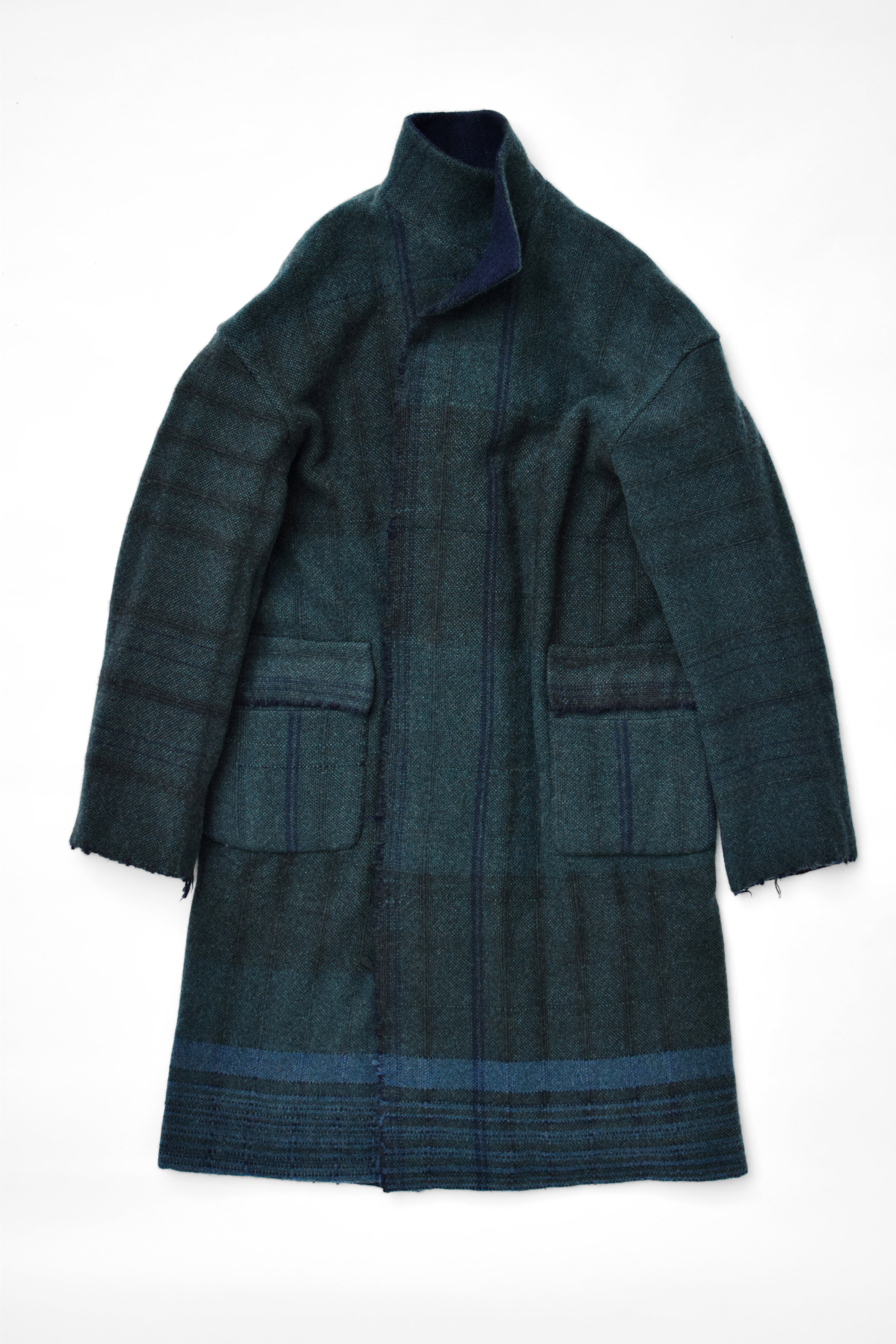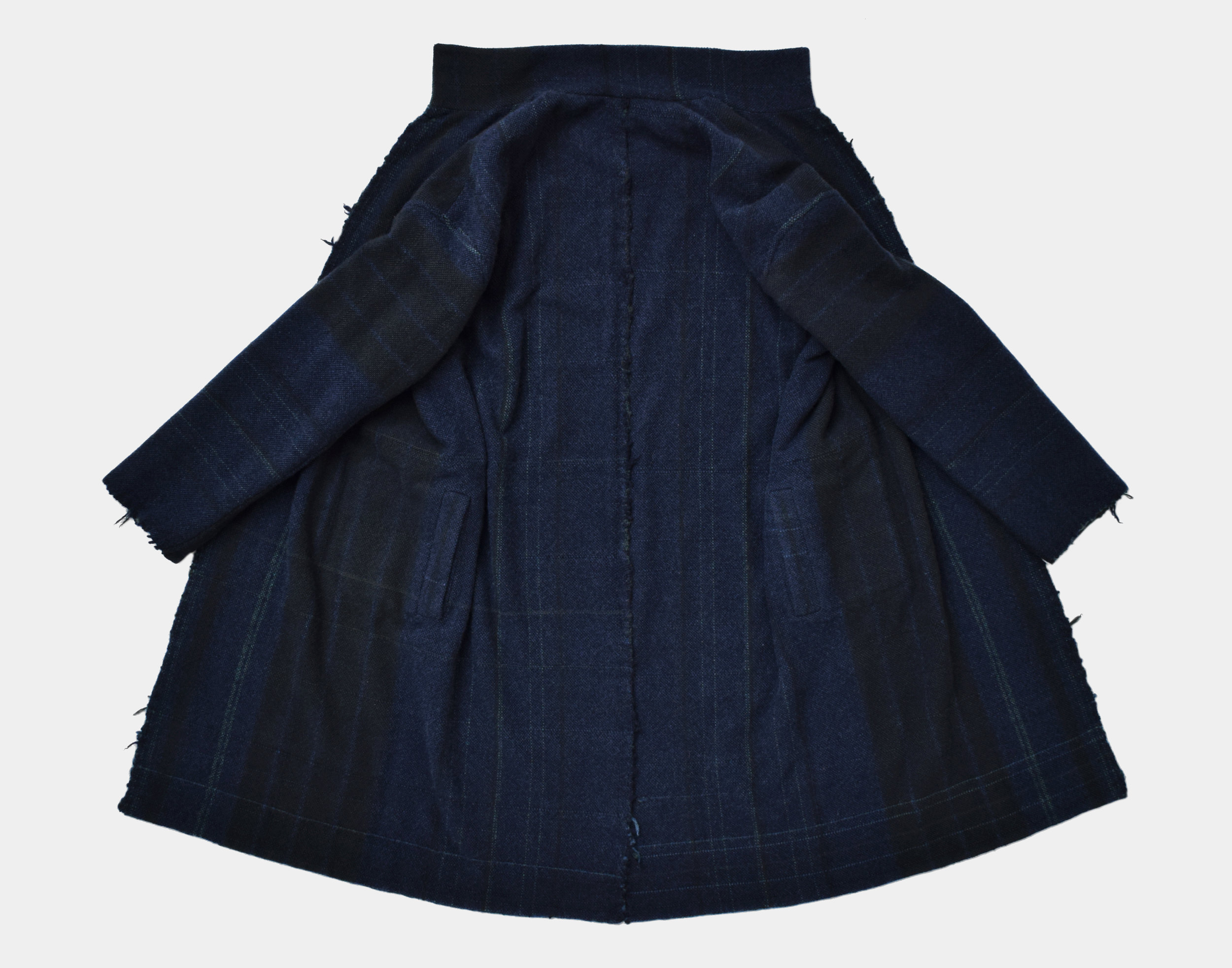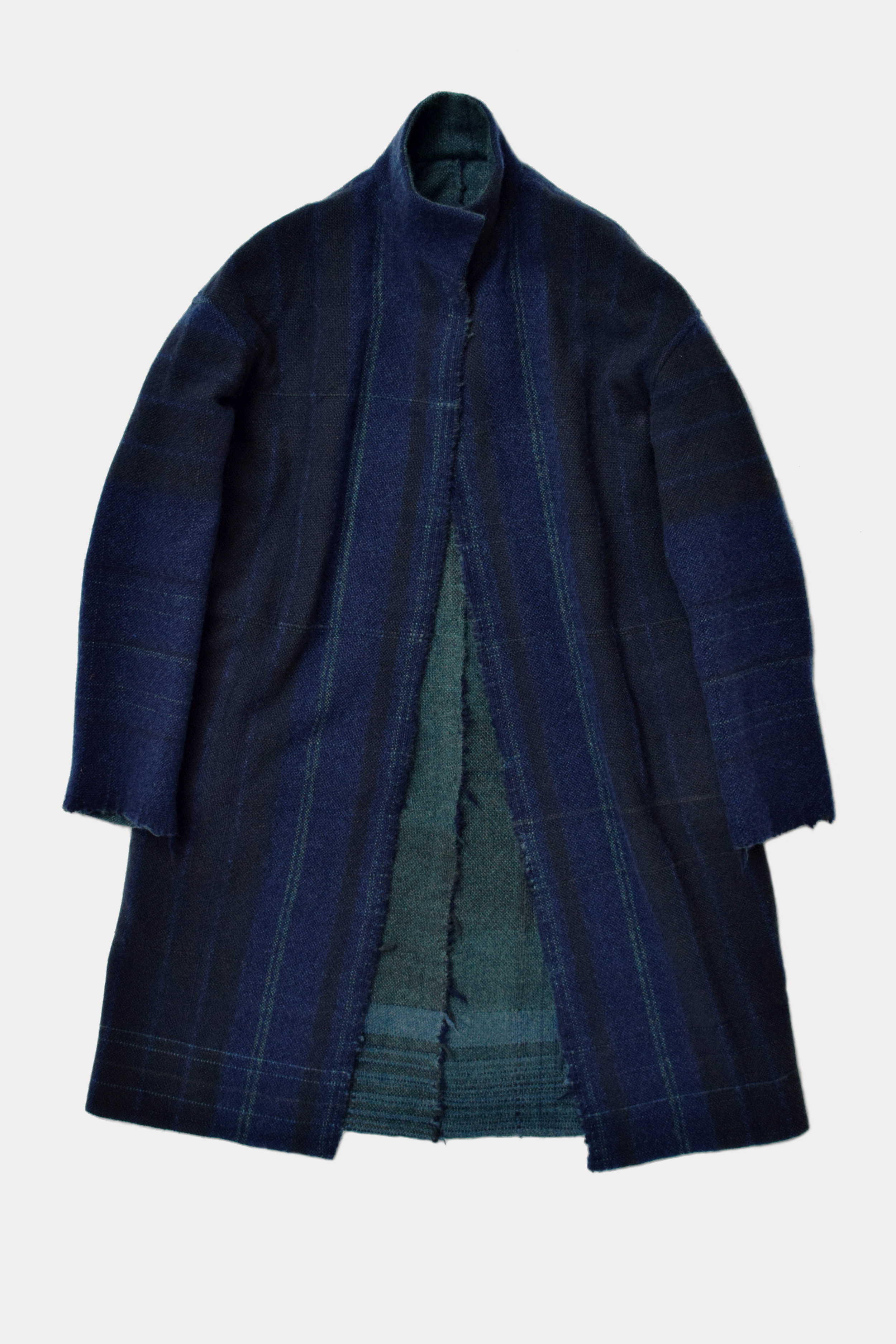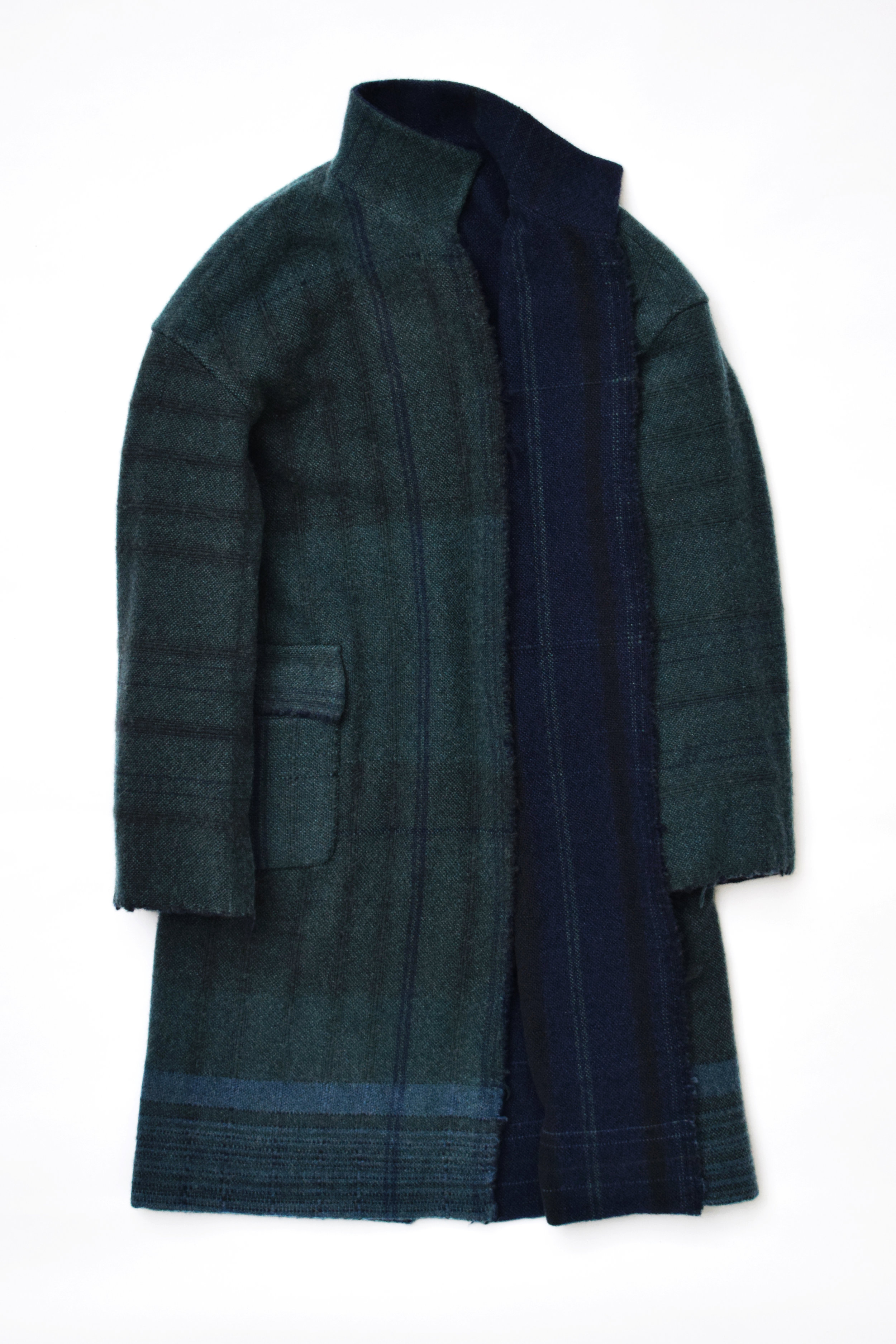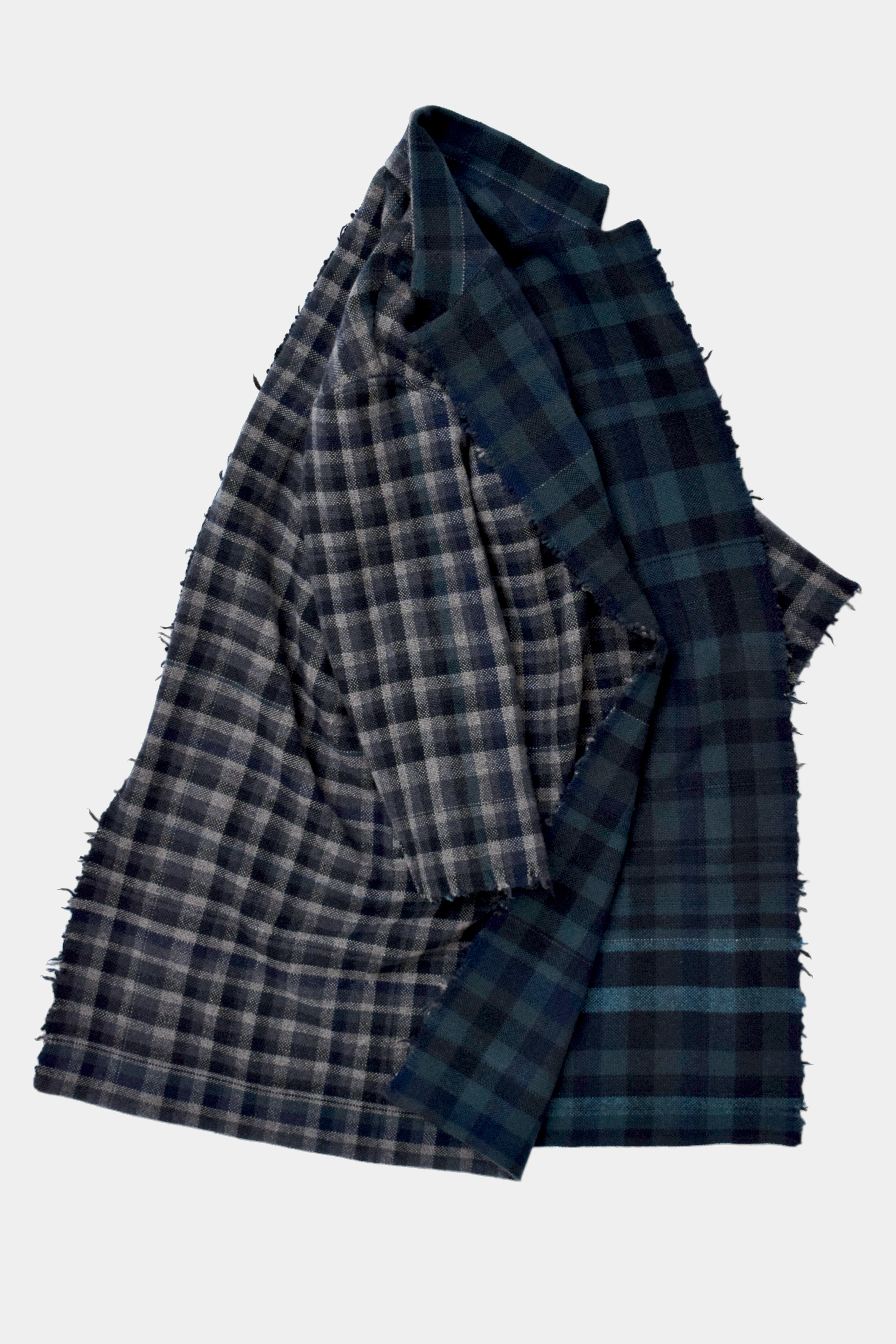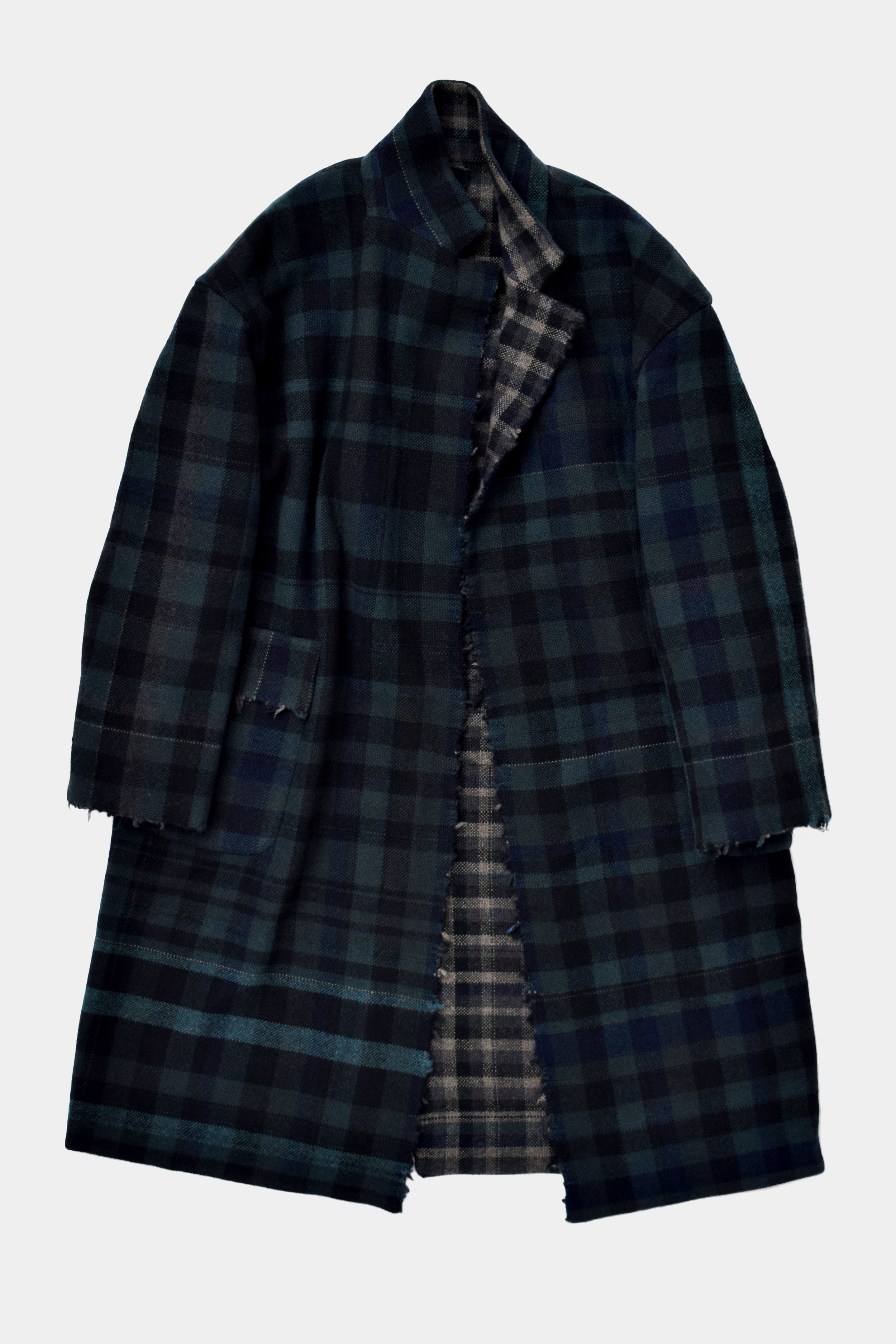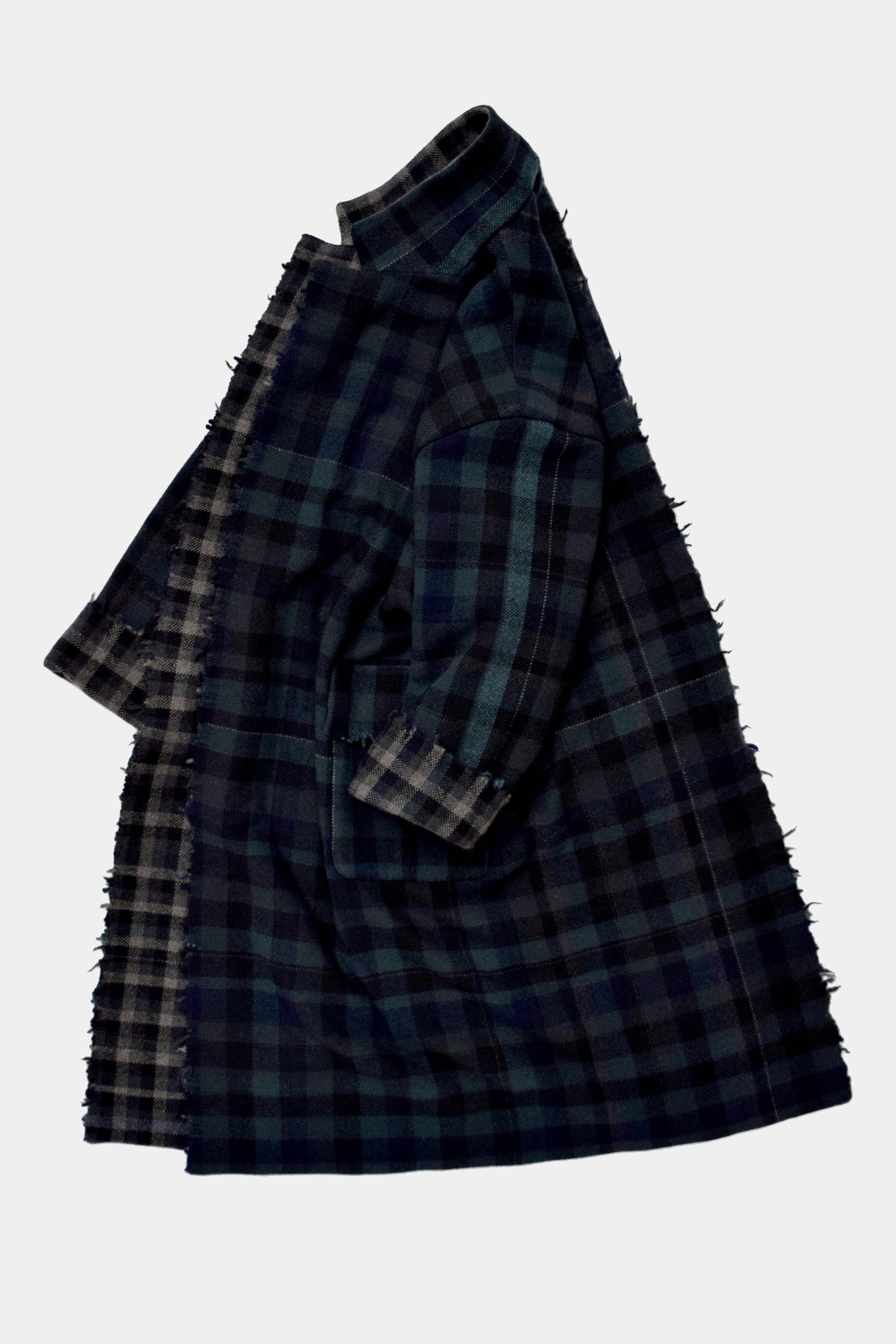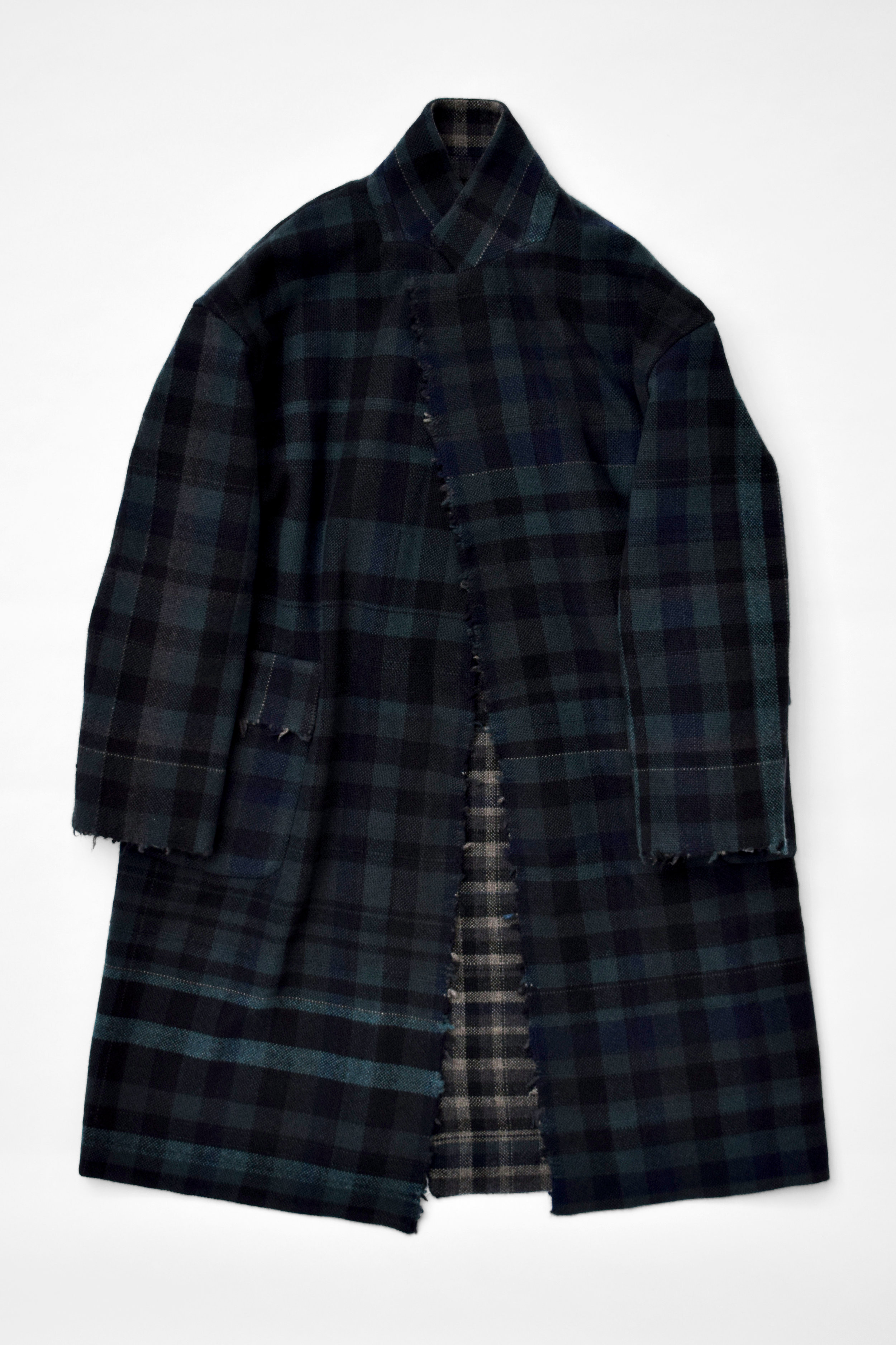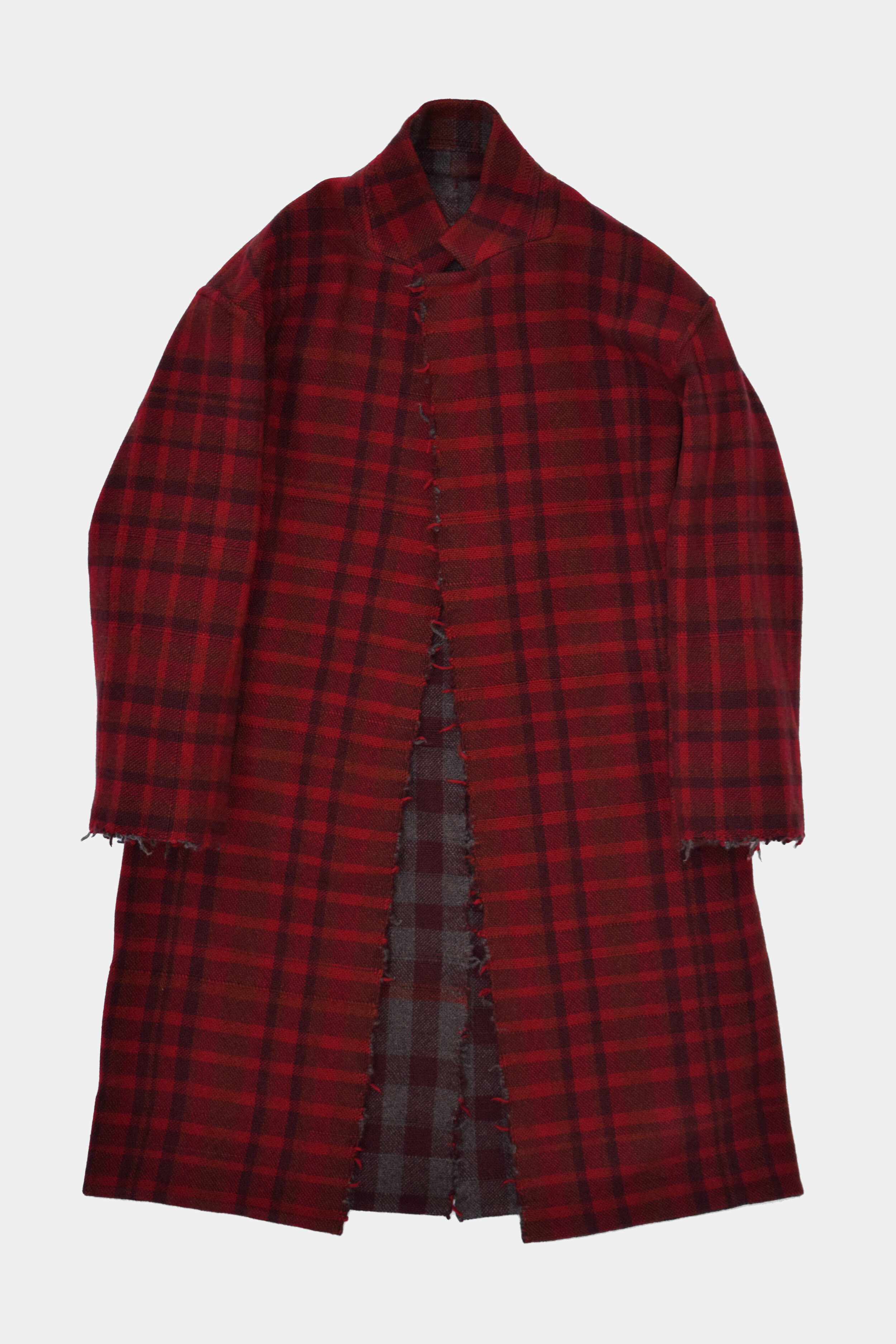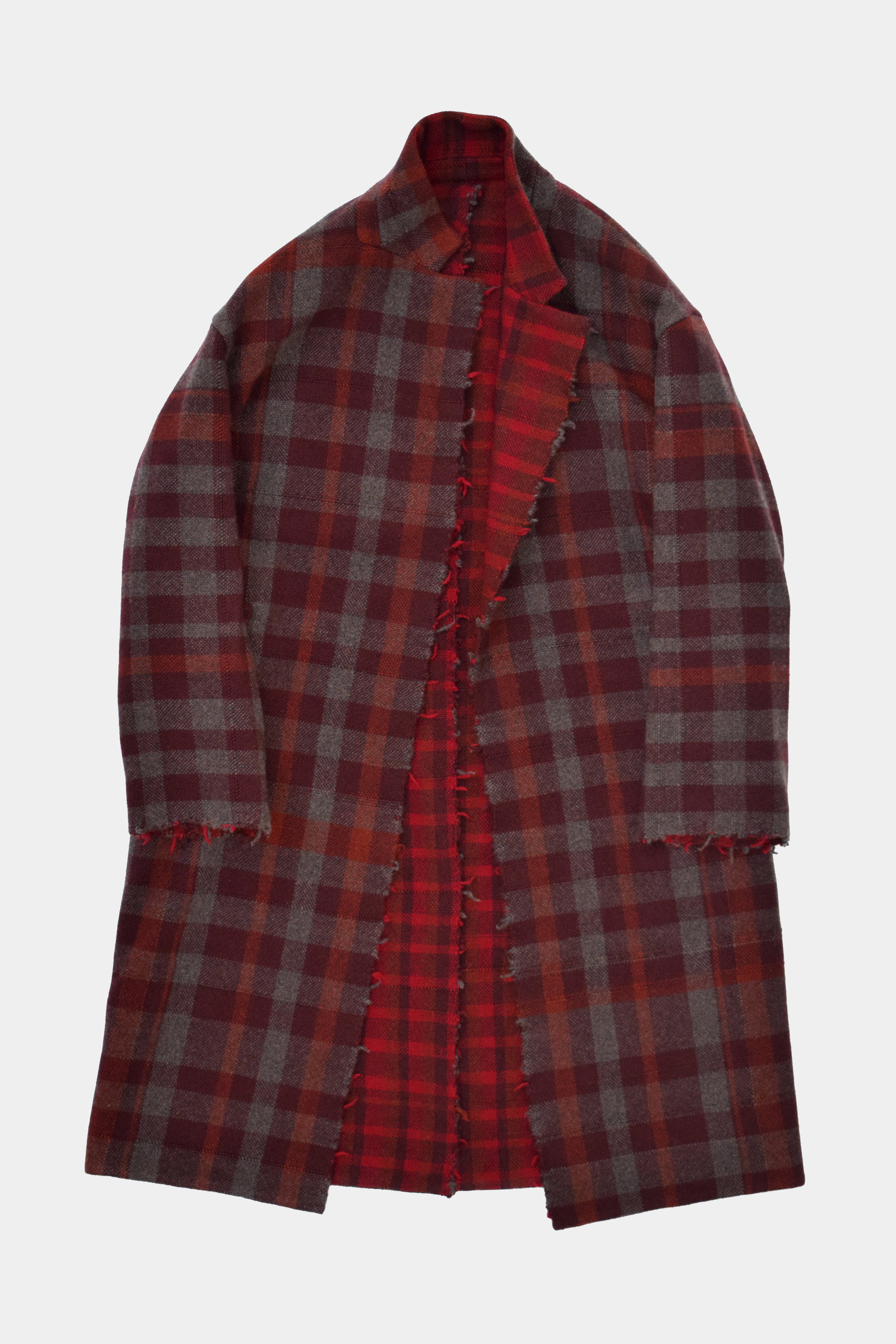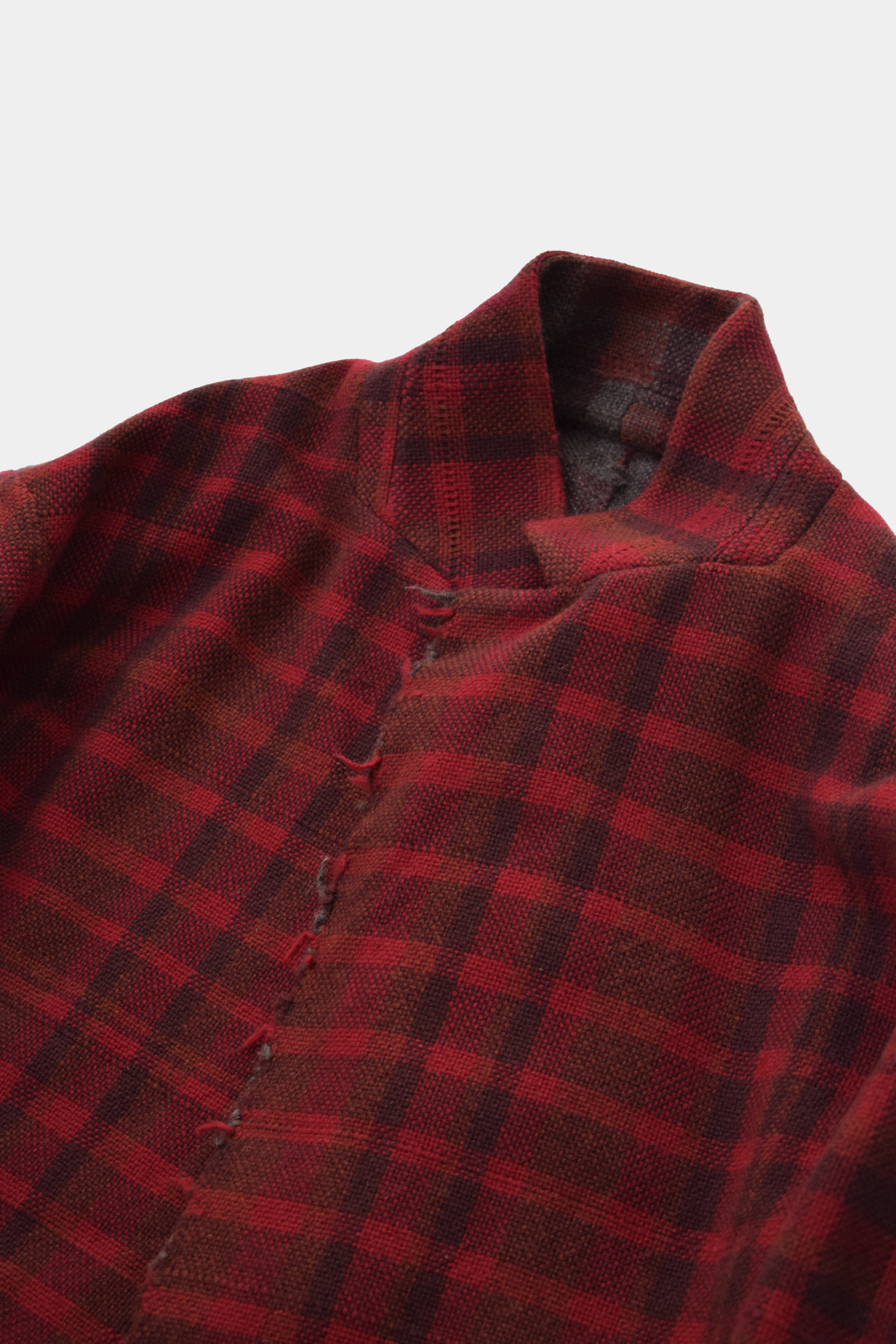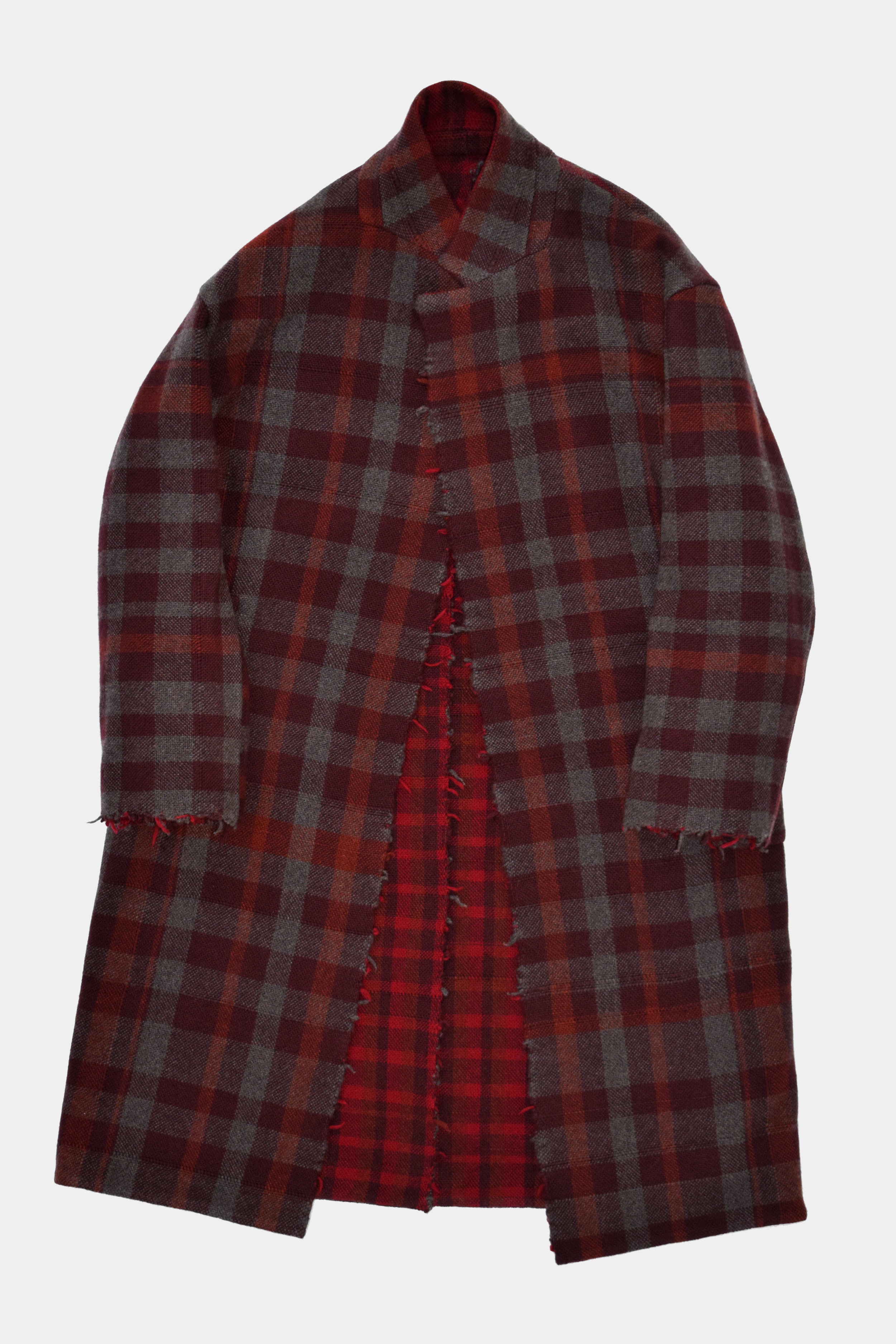Connected, Doubled, Reversed, Revealed, Concealed
Installation at Blue Mountain School in London, October Frieze Week
Hostem Archive is pleased to present a new body of work by Amy Revier. Focused on the nature of duality, cashmere coats have been built in double using a method new to Revier’s practice to create fully reversible worlds. Each coat explores the idea of dichotomy: between our inner and outer selves, separation and connection, things disclosed and undisclosed, folded and unfolded, revealed and concealed.
The reversible coats are built by doubleweave, an intensive process of weaving two textiles simultaneously, one layered on top of the other on the loom. The top layer is woven consciously by sight, the under layer is woven blindly by intuitive touch and revealed only after it is pulled off the loom. Revier approaches weaving as drawing – creating crossovers in checks, stripes, and single plains of colour. She is interested in the relationship between text and textile, exploring how we come to know things through the hand, and the translation of the articulated into feeling and movement.
Central to Revier’s practice is the idea of time and the ways in which we can cultivate or reclaim a sense of stillness. The creation of the coats acts as a conduit for this, embedding time within the works themselves and demanding a specific kind of concentration and slowness.
The works are fully reversible and double-layered, handwoven from 8-ply cashmere sourced by Revier from a family-run mill in the Scottish Highlands. Water from the nearby loch is used to open and soften the fibre, which is then cleaned and returned back to its source.
Amy Revier is a Texan artist based in London. Working single-handedly from her studio in Hampstead, Revier creates one of a kind textiles and garments on a traditional wooden floor loom. She meticulously selects hand-dyed yarns sourced from Japan and the Scottish Highlands, spending weeks working with spun material, taking it from thread to textile to garment. Revier develops the textile intuitively, deciding the final shape as she weaves and allows it to come to life.
Before moving to London, Revier was based in Iceland as a J. William Fulbright scholar, further developing her practice and exploring the relationship between sculpture and textiles. Drawing from a wide range of references across textile history and literature, Revier’s approach reflects a refined sensibility focused on process and technique. The making of each textile is as much about the act of weaving as it is about the final offering; each garment is a remnant of the solitary and ritual-like process of weaving.
Full outline of works below:
